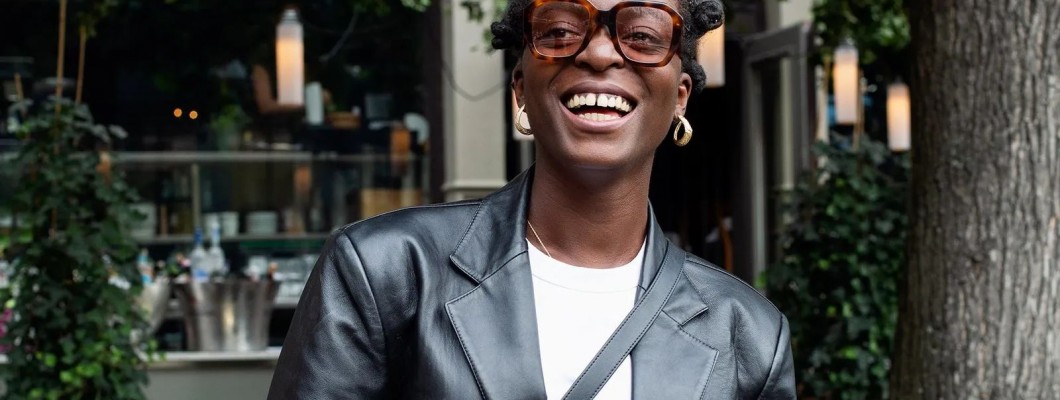
Don't you frequently find yourself perplexed when the salesperson asks if this is a good fit? Even though it may appear sturdy, you can still be unsure of whether it fits. This is so that you may try on a leather coat and make sure that it fits properly in your "natural posture."
Your natural stance is when you are standing straight up, relaxed, and with your arms at your sides. You're likely to get a baggy leather coat or one that is overly fitted if your leather coat doesn't look nice in this position and doesn't feel good either.
Now that you are aware of how to verify the fit of a Leather Coat, let's move on to more specifics and concentrate on the following areas:
Jacket Length
The length is one of the trickiest and most important aspects to consider when determining how a leather coat jacket should fit. Because it will distort your natural proportions, you shouldn't choose a Leather Coat jacket that is too long or too short. Although it is a difficult choice, you can determine the ideal length by concentrating on either of the following two methods:
The first is taking your natural stance when standing. Make sure the bottom of the jacket—not anything above or below it—hits your knuckles. Second, if the bottom of your jacket just touches mid-crotch, you may confirm that the length is correct.
Make sure the jacket stops exactly at your mid-crotch if you are slightly lower in height to ensure that the proportions are balanced. Additionally, pay attention to coverage and make sure the Leather Coat jacket is completely or partially concealing your back.
The Shoulders
The shoulder area is the most crucial component of your jacket's fit, so pay attention there once you've checked the length. The seam should be at the edge of your shoulder, just where it lowers to your arm, for a perfect Leather Coat shoulder fit.
The seam joining the sleeve to the jacket may be jacked up along your shoulder bone or drooping on your upper bicep even though your leather coat frequently looks to fit you nicely. This could have ripple effects that result in lumps or wrinkles, which you don't want.
Although tailors are skilled at repairing some leather coat flaws, shoulders are difficult and expensive, and you might not attain the ideal fit despite numerous modifications. So, be careful to get the proper shoulder fit right away.
Jacket Sleeve Length
Next, let's discuss sleeve length, which significantly influences the final appearance of your overall outfit. It would be preferable if you made sure that the sleeve of your blazer jacket did not completely extend past the cuff (shirt sleeve) or completely enclose the sleeve.
This optimal sleeve length leaves about half an inch of the shirt sleeve showing over the shirt cuff. Nevertheless, you do not need to be very concerned with sleeves because they can be simply changed, so choose the length you believe to be the most ideal.
The Jacket Closure
It is vital to evaluate how your leather coat jacket appears and fits over your body because it is frequently worn closed when standing. Choose a single-breasted jacket for this reason to check that the two sides are perfectly overlapping.
In order to avoid wearing a jacket that is too tight or too loose, please make sure the lapels do not dangle off your body or the lower borders do not flare out. If you want to appear thinner and more sophisticated, use a stylish dark-colored or black blazer jacket, for instance.
Jacket Collar
A well-fitted jacket collar will give the leather coat jacket the right shape because it acts as an anchor for the entire ensemble. As a result, make sure your shirt collar is positioned correctly against your neck and your jacket collar is properly resting against it.
In addition to looking extremely messy if the collar is too loose, it can also cause creases and folds underneath it if it is too tight. Select the Leather Coatable fabric to ensure that the collar fits well around your neck without being too stiff or loose.
The Buttons
Let's finish by concentrating on the buttons, which should be strategically placed to give your Leather Coat more depth and sharpness. Always keep the middle button fastened on a leather coat with three buttons, and the top button fastened on a leather coat with two buttons.
Next, make sure that the button never extends below your belly button. Nevertheless, you can raise it somewhat based on the situation and your personal fashion preferences. If you want to look formal, choose buttons that are close to the color of your Leather Coat jacket. For smart-casual appearances, however, contrast buttons can add some fun.
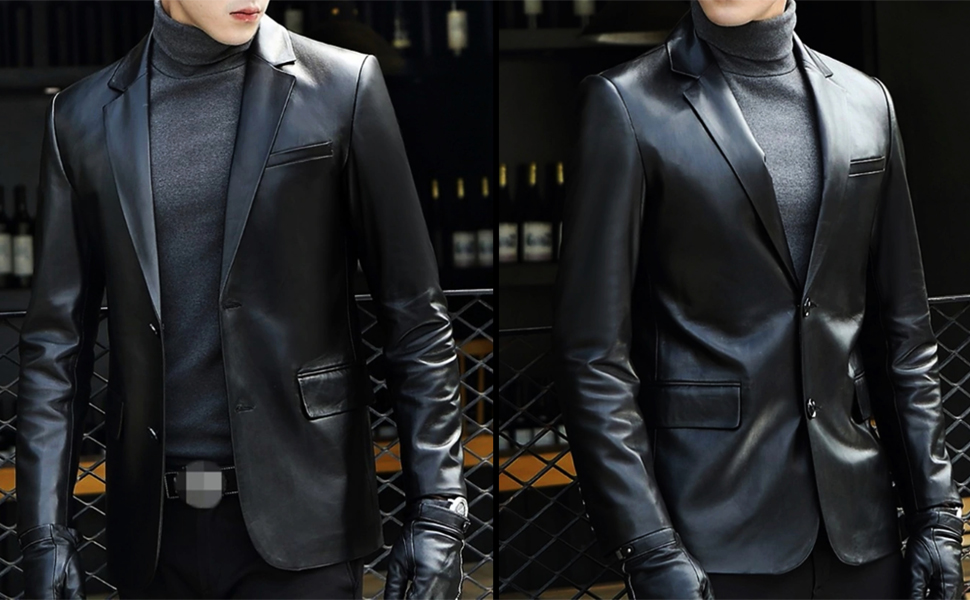
Five Obvious Signs the Leather Coat Doesn't Fit Right
Now that you know how to ensure the Leather Coat fits properly, let's discuss some telltale signs of a poor fit.
1. Your shoulder can sag, a sign that the jacket's shoulder is excessively loose.
2. Your blazer's front button is excessively high, giving you an unbalanced appearance.
3. The space between the breast and the jacket gives it a disproportionate appearance.
4. The length of the leather coat jacket is off.
5. If your jacket collar frequently rubs against your neck, you should correct the angle of your shoulder.

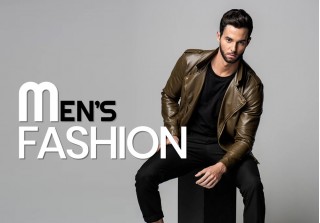
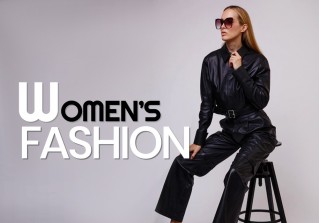
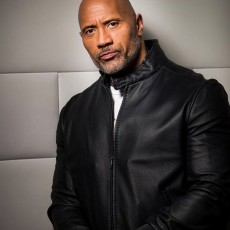






283 Comment(s)
Hello, I wonder if I can make a slide transition in the category of "wall-clocks" on our Platin Clock site: https://www.platinsaat.com/duvar-saatleri
Searching for the best pest control in Dubai? Way Pest Control is the top pest control company in Dubai and we offer international quality pest control services such as termite treatment, rodent snake control, bird control services and more.
Get Kitchen Hood Cleaning Services in Abu Dhabi | Mazmo UAE
Mazmo UAE is the number one cleaning company in Dubai, we offer many cleaning services such as grease trap cleaning, sewage tank cleaning, drain line jetting, kitchen hood cleaning in Abu Dhabi, Dubai and all across UAE
Buy Sandals for Men and Women Online | Cavallo Collections | UAE
Whether you are sliding into summer vacation or facing another day running errands around town, Cavallo Collections' selection of sandals is durably designed to take you every step of the way. Buy Sandals for Men and Women Online at Cavallo Collections!
Have you ever wondered who posts some of this stuff that you come across? Recently it seems to have become an epidemic, except that recently it seems to have become better. What are your thoughts?
Generally I do not read article on blogs, however I wish to say that this write-up very forced me to check out and do so! Your writing taste has been amazed me. Thanks, very great post.
Generally I do not read article on blogs, however I wish to say that this write-up very forced me to check out and do so! Your writing taste has been amazed me. Thanks, very great post.
Yes, great US Military force. Also, in his post you have given a chance to listen about US Military. I really appreciate your work. Thanks for sharing it.
I will also motivate almost everyone to save this web page for the help they like to help their posted appearance
Your explanation is organized very easy to understand!!! I understood at once. Could you please post about majorsite ?? Please!!
I am unquestionably making the most of your site. You unquestionably have some extraordinary knowledge and incredible stories.
me from for if I is top
Nothing compares to Weber using Genesis sort of grills. That is certainly the type gas grills which have been that will always make sure that they deliver a high performance part of down interval
I hope you will share such type of impressive contents again with us so that we can utilize it and get more advantage.
Excellent article plus its information and I positively bookmark to this site because here I always get an amazing knowledge as I expect. Thanks for this to share with us
Very well written story. It will be useful to everyone who utilizes it, as well as myself. Keep up the good work – i will definitely read more posts.
Good – I should certainly say I’m impressed with your site. I had no trouble navigating through all the tabs as well as related information. It ended up being truly simple to access. Good job..
I definitely wanted to post a simple remark in order to thank you for all the unique tips and tricks you are giving out on this website. My incredibly long internet search has finally been recognized with extremely good points to go over with my company. I ‘d say that we readers are very blessed to exist in a superb site with so many awesome people with good advice. I feel pretty happy to have come across your entire website and look forward to tons of more brilliant moments reading here. Thanks a lot once more for everything.
I think this web site has got very fantastic indited written content articles .
This is great, you are good, i like your post and i still waiting our next post.
hello!,I really like your writing so a lot! percentage we keep up a correspondence extra about your article on AOL? I require an expert on this area to unravel my problem. Maybe that's you! Taking a look ahead to look you.
What i don’t understood is if truth be told how you’re no longer really a lot more neatly-liked than you might be now. You’re so intelligent. You understand thus considerably when it comes to this topic, made me in my view consider it from so many numerous angles. Its like women and men don’t seem to be fascinated unless it’s something to accomplish with Woman gaga! Your own stuffs great. Always take care of it up!
The Nectarine has smooth-slick pores and skin like a Plum. The flavor is resembling a Peach. The significant distinction is that the Peach has a rough protective skin a prickly fiber that protects the fruit and if not wiped-off can damage your tongue….
After study a few of the blog articles in your internet site now, and that i really appreciate your strategy for blogging. I bookmarked it to my bookmark web site list and you will be checking back soon. Pls look at my web-site also and figure out what you consider.
i think that gay marriage should be allowed in certain states but not in other states “
Thanks for this article. I would also like to mention that it can end up being hard if you find yourself in school and simply starting out to create a long history of credit. There are many pupils who are only trying to live and have a good or beneficial credit history can sometimes be a difficult factor to have.
Our ergonomic mouse pads are designed to provide the perfect balance of cushioning and support, helping you stay comfortable and focused during long hours of work or play.
https://helpgametools.com/ mouse pad
CNC Turning is best if you are looking to create fast and repeated symmetrical or cylindrical parts with a high production volume.
I got what you intend, thanks for putting up. Woh I am glad to find this website through google.
This fashion of leather jackets remains trendy in every era, even now the modern fashion is also from him, but with this Firefly Lane Season 2 Tully Hart Blazer is also very popular today.
I will right away grasp your rss as I can not in finding your e-mail subscription hyperlink or e-newsletter service. Do you’ve any? Kindly permit me realize so that I could subscribe. Thanks.
I invite you to visit my site and learn new ideas
카지노사이트 ACE21에서 안전한 카지노 사이트만을 추천합니다.카지노, 바카라, 온라인카지노, 순위 , 라이브카지노, 해외카지노, 사설카지노, 호텔카지노 등 각종 인터넷 게임을 제공하는 신뢰할 수 있는 통합사이트와 함께 다양한 이벤트에 참여하세요!" />
<link rel="canonical" href="https://8mod.net/" />
https://8mod.net/baccaratsite/
if you enter my site you will definitely learn
https://main7.net/baca/
This jacket is ideal for displaying your team's satisfaction. This eye-catching bomber jacket combines classic style with a contemporary touch. Whether you're heading to a game or a classy night out, this Kate Upton Jacket will keep you looking current.
Nice post. I learn something more challenging on diverse blogs everyday. It will always be stimulating to learn content off their writers and exercise a little something at their store. I’d prefer to use some while using content on my own weblog whether you don’t mind. Natually I’ll provide a link with your internet weblog. Many thanks sharing.
Very good topic, similar texts are I do not know if they are as good as your work out.
Our Beast Female Escort Master Center Offers City Call Young ladies At Sensible Rates And You Shouldn't play with To Worry about Straightforwardness As We Keep two or three Plans, as a rule, Free On Achievements Of The Week Or Events Just For Emergency Purposes!
I know this isn’t exactly on subject, however i have a website utilizing the identical program as nicely and i get troubles with my comments displaying. is there a setting i am missing? it’s doable you might help me out? thanx.
<a href="https://luna99.xyz/"> luna99 </a> Link 1
<a href="https://luna99.live/"> luna99 </a> Link 2
<a href="https://luna99pro.site/"> luna99 </a> Link 3
<a href="https://luna99.club/"> luna99 </a> Link 4
I just found this blog and have high hopes for it to continue. Keep up the great work, its hard to find good ones. I have added to my favorites. Thank You.
I am glad to be a visitant of this sodding site! , appreciate it for this rare information!
Hey very cool site!! Man .. Excellent .. Amazing .. I will bookmark your blog and take the feeds also…I am happy to find so many useful information.
Grrrr… well I’m not writing all that over again. Anyways, just wanted to say ????
Nevertheless think of if you added some great graphics or video clips to give your posts more, “pop”! Your content is excellent ????
Why do only so much written on this subject? Here you see more.
Really appreciate your thoughts and are very helpful for the reader thanks for sharing
The Highest Standards For Material Quality Because Of This Stylo Jacket Continually Values Quality And Uses Premium Materials To Create Stylish Jackets With Modern Designs.
188Bet nha cai ca cuoc truc tuyen co nhieu nam hoat dong, cung cap da dang san pham chat luong. Ben canh do, chinh sach cham soc khach hang chuyen nghiep cung voi ty le an thuong hap dan duoc nhieu nguoi yeu thich.
Nha cai Wi88 la san choi game ca cuoc the thao uy tin hang dau moi ra mat nam 2024 tai thi truong Viet Nam cung nhu chau A. La thuong hieu moi cua nha cai W88 noi tieng hon 30 nam, Wi88 cung so huu giao dien bat mat va keo cuoc da dang, thu hut dong dao cuoc thu tham gia moi ngay.
https://fullservicelavoro.jimdosite.com/
http://treeads.nation2.com/
https://jumperads.yolasite.com/
http://jumperads.nation2.com/
http://transferefurniture.hatenablog.com
https://atar-almadinah.weebly.com/
https://allmoversinriyadh.wordpress.com/
https://allmoversinriyadh.wordpress.com/2022/04/09/%d8%b4%d8%b1%d9%83%d8%a9-%d8%aa%d9%86%d8%b8%d9%8a%d9%81-%d8%a8%d8%a7%d9%84%d8%b1%d9%8a%d8%a7%d8%b6-%d9%85%d8%ac%d8%b1%d8%a8%d8%a9/
https://allmoversinriyadh.wordpress.com/2022/04/07/%d8%a7%d9%81%d8%b6%d9%84-%d8%b4%d8%b1%d9%83%d8%a9-%d8%aa%d9%86%d8%b8%d9%8a%d9%81-%d8%a8%d8%a7%d9%84%d8%b1%d9%8a%d8%a7%d8%b6/
https://allmoversinriyadh.wordpress.com/2022/05/13/%d8%b4%d8%b1%d9%83%d8%a9-%d9%86%d9%82%d9%84-%d8%b9%d9%81%d8%b4-%d9%88%d8%ba%d8%b1%d9%81-%d8%a7%d9%84%d9%86%d9%88%d9%85-%d8%a8%d8%a7%d9%84%d8%b1%d9%8a%d8%a7%d8%b6/
https://companymoversinjeddah.wordpress.com/
https://moversfurniture2018.wordpress.com/2018/12/30/%D8%A7%D9%87%D9%85-%D9%85%D9%83%D8%A7%D8%AA%D8%A8-%D9%88%D9%85%D8%A4%D8%B3%D8%B3%D8%A7%D8%AA-%D8%B4%D8%B1%D9%83%D8%A7%D8%AA-%D9%86%D9%82%D9%84-%D8%B9%D9%81%D8%B4-%D8%A8%D8%AC%D8%A7%D8%B2%D8%A7%D9%86/
https://moversriyadhcom.wordpress.com/
https://moversmedina.wordpress.com/
https://moversfurniture2018.wordpress.com/
https://moversmecca.wordpress.com/
https://khairyayman74.wordpress.com/
https://companymoversmecca.home.blog/
https://companymoverstaif.home.blog/
https://companymoverskhamismushit.home.blog/
https://whitear.home.blog/
https://companyhouseservice.wordpress.com/
http://bestmoversfurniture.wordpress.com/
https://companymoversjeddah.wordpress.com/
https://companycleaning307819260.wordpress.com/
https://companymoversriydah.wordpress.com/
https://ataralmadinah662300791.wordpress.com/
https://ataralmadinah662300791.wordpress.com/2022/02/05/%d8%b4%d8%b1%d9%83%d8%a9-%d9%86%d9%82%d9%84-%d8%b9%d9%81%d8%b4-%d8%a8%d8%a7%d9%84%d8%b1%d9%8a%d8%a7%d8%b6/
https://ataralmadinah662300791.wordpress.com/2022/04/12/%D8%B4%D8%B1%D9%83%D8%A9-%D9%86%D9%82%D9%84-%D8%B9%D9%81%D8%B4-%D9%85%D9%86-%D8%A7%D9%84%D8%B1%D9%8A%D8%A7%D8%B6-%D8%A7%D9%84%D9%89-%D8%A7%D9%84%D8%AF%D9%85%D8%A7%D9%85/
https://groups.google.com/g/moversfurniture/c/wwQFSNvgyAI
https://groups.google.com/g/moversfurniture/c/4L1oHETS4mQ
https://nowewyrazy.uw.edu.pl/profil/khairyayman
https://companyhouseservice.wordpress.com/2022/08/06/%d8%a7%d9%81%d8%b6%d9%84-%d8%b4%d8%b1%d9%83%d8%a9-%d8%aa%d9%86%d8%b8%d9%8a%d9%81-%d8%a8%d8%a7%d9%84%d8%b1%d9%8a%d8%a7%d8%b6/
<a href="https://companymoversinjeddah.wordpress.com/">شركات نقل عفش واثاث بجدة</a>
<a href="https://companymoversinjeddah.wordpress.com/2019/02/16/%d8%b4%d8%b1%d9%83%d8%a7%d8%aa-%d9%86%d9%82%d9%84-%d8%b9%d9%81%d8%b4-%d9%88%d8%a7%d8%ab%d8%a7%d8%ab-%d8%a8%d8%a7%d9%84%d8%b7%d8%a7%d8%a6%d9%81-%d8%af%d9%8a%d9%86%d8%a7-%d8%af%d8%a8%d8%a7%d8%a8-%d9%86/">شركات نقل عفش بالطائف</a>
<a href="https://companymoversinjeddah.wordpress.com/2019/02/15/%d8%a7%d8%b3%d8%b9%d8%a7%d8%b1-%d9%88%d8%a7%d8%b1%d9%82%d8%a7%d9%85-%d8%b4%d8%b1%d9%83%d8%a7%d8%aa-%d9%86%d9%82%d9%84-%d8%a7%d9%84%d8%b9%d9%81%d8%b4-%d8%a8%d8%a7%d9%84%d9%85%d8%af%d9%8a%d9%86%d8%a9/">اسعار وارقام شركات نقل العفش بالمدينة المنورة</a>
<a href="https://companymoversinjeddah.wordpress.com/2019/02/15/%d8%af%d9%8a%d9%86%d8%a7-%d9%86%d9%82%d9%84-%d8%b9%d9%81%d8%b4-%d8%ac%d8%af%d8%a9-%d8%a7%d9%81%d8%b6%d9%84-%d8%af%d9%8a%d9%86%d8%a7/">دينا نقل عفش جدة ,افضل دينا</a>
<a href="https://companymoversinjeddah.wordpress.com/2019/02/15/%d8%a7%d8%b1%d8%ae%d8%b5-%d8%b4%d8%b1%d9%83%d9%87-%d9%86%d9%82%d9%84-%d8%b9%d9%81%d8%b4-%d8%a8%d8%ac%d8%af%d9%87-%d8%a7%d8%b3%d8%b9%d8%a7%d8%b1-%d9%81%d8%b5%d9%84-%d8%a7%d9%84%d8%b4%d8%aa%d8%a7%d8%a1/">ارخص شركه نقل عفش بجده</a>
<a href="https://companymoversinjeddah.wordpress.com/2019/02/15/%d8%af%d9%84%d9%8a%d9%84-%d8%b4%d8%b1%d9%83%d8%a7%d8%aa-%d9%86%d9%82%d9%84-%d8%a7%d9%84%d8%b9%d9%81%d8%b4-%d8%a8%d8%ac%d8%af%d8%a9-%d9%85%d8%b9-%d8%ae%d8%b5%d9%88%d9%85%d8%a7%d8%aa/">دليل شركات نقل العفش بجدة</a>
<a href="https://companymoversinjeddah.wordpress.com/2019/02/15/%d8%b4%d8%b1%d9%83%d8%a9-%d9%86%d9%82%d9%84-%d8%b9%d9%81%d8%b4-%d8%a8%d8%b1%d8%a7%d8%a8%d8%ba-15-%d8%b9%d8%a7%d9%85-%d8%ae%d8%a8%d8%b1%d8%a9/">شركة نقل عفش برابغ ,15 عام خبرة</a>
<a href="https://companymoversinjeddah.wordpress.com/2018/12/12/%d8%b4%d8%b1%d9%83%d8%a7%d8%aa-%d9%86%d9%82%d9%84-%d8%b9%d9%81%d8%b4-%d9%88%d8%a7%d8%ab%d8%a7%d8%ab-%d8%a8%d8%a7%d9%84%d8%a8%d8%a7%d8%ad%d9%87/">شركات نقل عفش واثاث بالباحه</a>
<a href="https://companymoversinjeddah.wordpress.com/2018/12/12/start-moving-company-to-khamis-mushit/">وسائل نقل العفش بخميس مشيط</a>
https://ataralmadinah662300791.wordpress.com/ شركة الصقر الدولي لنقل العفش والاثاث وخدمات التنظيف المنزلية
شركة مكافحة حشرات بينبع وكذلك شركة كشف تسربات المياه بينبع وتنظيف خزانات وتنظيف الموكيت والسجاد والكنب والشقق والمنازل بينبع وتنظيف الخزانات بينبع وتنظيف المساجد بينبع شركة تنظيف بينبع تنظيف المسابح بينبع
https://jumperads.com/yanbu/anti-insects-company-yanbu.html شركة مكافحة حشرات بينبع
httsp://jumperads.com/yanbu/water-leaks-detection-company-yanbu.html شركة كشف تسربات بينبع
https://jumperads.com/yanbu/yanbu-company-surfaces.html شركة عزل اسطح بينبع
https://jumperads.com/yanbu/yanbu-company-sewage.html شركة تسليك مجاري بينبع
https://jumperads.com/yanbu/yanbu-cleaning-company-sofa.html شركة تنظيف كنب بينبع
https://jumperads.com/yanbu/yanbu-cleaning-company-mosques.html شركة تنظيف مساجد بينبع
https://jumperads.com/yanbu/yanbu-cleaning-company-Carpet.html شركة تنظيف سجاد بينبع
https://jumperads.com/yanbu/yanbu-cleaning-company-tanks.html شركة تنظيف خزانات بينبع
https://jumperads.com/yanbu/yanbu-cleaning-company-swimming-bath.html شركة تنظيف وصيانة مسابح بينبع
https://jumperads.com/yanbu/yanbu-cleaning-company-Furniture.html شركة تنظيف الاثاث بينبع
https://jumperads.com/yanbu/yanbu-cleaning-company-home.html شركة تنظيف شقق بينبع
https://jumperads.com/yanbu/yanbu-cleaning-company-Carpets.html شركة تنظيف موكيت بينبع
https://jumperads.com/yanbu/yanbu-cleaning-company.html شركة تنظيف مجالس بينبع
https://jumperads.com/yanbu/yanbu-cleaning-company-house.html شركة تنظيف منازل بينبع
https://jumperads.com/yanbu/yanbu-cleaning-company-Villas.html شركة تنظيف فلل بينبع
https://jumperads.com/yanbu/yanbu-cleaning-company-curtains.html شركة تنظيف ستائر بينبع
https://jumperads.com/yanbu/yanbu-company-tile.html شركة جلي بلاط بينبع
شركة مكافحة حشرات بالجبيل وكذلك شركة كشف تسربات المياه بالجبيل وتنظيف خزانات وتنظيف الموكيت والسجاد والكنب والشقق والمنازل بالجبيل وتنظيف الخزانات بالجبيل وتنظيف المساجد بالجبيل شركة تنظيف بالجبيل تنظيف المسابح بالجبيل
https://jumperads.com/jubail/anti-insects-company-jubail.html شركة مكافحة حشرات بالجبيل
https://jumperads.com/jubail/water-leaks-detection-company-jubail.html شركة كشف تسربات بالجبيل
https://jumperads.com/jubail/jubail-company-surfaces.html شركة عزل اسطح بالجبيل
https://jumperads.com/jubail/jubail-company-sewage.html شركة تسليك مجاري بالجبيل
https://jumperads.com/jubail/jubail-cleaning-company-sofa.html شركة تنظيف كنب بالجبيل
https://jumperads.com/jubail/jubail-cleaning-company-mosques.html شركة تنظيف مساجد بالجبيل
https://jumperads.com/jubail/jubail-cleaning-company-Carpet.html شركة تنظيف سجاد بالجبيل
https://jumperads.com/jubail/jubail-cleaning-company-tanks.html شركة تنظيف خزانات بالجبيل
https://jumperads.com/jubail/jubail-cleaning-company-swimming-bath.html شركة تنظيف وصيانة مسابح بالجبيل
https://jumperads.com/jubail/jubail-cleaning-company-Furniture.html شركة تنظيف الاثاث بالجبيل
https://jumperads.com/jubail/jubail-cleaning-company-home.html شركة تنظيف شقق بالجبيل
https://jumperads.com/jubail/jubail-cleaning-company-Carpets.html شركة تنظيف موكيت بالجبيل
https://jumperads.com/jubail/jubail-cleaning-company.html شركة تنظيف مجالس بالجبيل
https://jumperads.com/jubail/jubail-cleaning-company-house.html شركة تنظيف منازل بالجبيل
https://jumperads.com/jubail/jubail-cleaning-company-curtains.html شركة تنظيف ستائر بالجبيل
https://jumperads.com/jubail/jubail-cleaning-company-Villas.html شركة تنظيف فلل بالجبيل
https://jumperads.com/jubail/jubail-company-tile.html شركة جلي بلاط بالجبيل
https://emc-mee.com/blog.html شركات نقل العفش
اهم شركات كشف تسربات المياه بالدمام كذلك معرض اهم شركة مكافحة حشرات بالدمام والخبر والجبيل والخبر والاحساء والقطيف كذكل شركة تنظيف خزانات بجدة وتنظيف بجدة ومكافحة الحشرات بالخبر وكشف تسربات المياه بالجبيل والقطيف والخبر والدمام
https://emc-mee.com/cleaning-company-yanbu.html شركة تنظيف بينبع
https://emc-mee.com/blog.html شركة نقل عفش
اهم شركات مكافحة حشرات بالخبر كذلك معرض اهم شركة مكافحة حشرات بالدمام والخبر والجبيل والخبر والاحساء والقطيف كذلك شركة رش حشرات بالدمام ومكافحة الحشرات بالخبر
https://emc-mee.com/anti-insects-company-dammam.html شركة مكافحة حشرات بالدمام
شركة تنظيف خزانات بجدة الجوهرة من افضل شركات تنظيف الخزانات بجدة حيث ان تنظيف خزانات بجدة يحتاج الى مهارة فى كيفية غسيل وتنظيف الخزانات الكبيرة والصغيرة بجدة على ايدى متخصصين فى تنظيف الخزانات بجدة
https://emc-mee.com/tanks-cleaning-company-jeddah.html شركة تنظيف خزانات بجدة
https://emc-mee.com/water-leaks-detection-isolate-company-dammam.html شركة كشف تسربات المياه بالدمام
https://emc-mee.com/ شركة الفا لنقل عفش واثاث
https://emc-mee.com/transfer-furniture-jeddah.html شركة نقل عفش بجدة
https://emc-mee.com/transfer-furniture-almadina-almonawara.html شركة نقل عفش بالمدينة المنورة
https://emc-mee.com/movers-in-riyadh-company.html شركة نقل اثاث بالرياض
https://emc-mee.com/transfer-furniture-dammam.html شركة نقل عفش بالدمام
https://emc-mee.com/transfer-furniture-taif.html شركة نقل عفش بالطائف
https://emc-mee.com/transfer-furniture-mecca.html شركة نقل عفش بمكة
https://emc-mee.com/transfer-furniture-yanbu.html شركة نقل عفش بينبع
https://emc-mee.com/transfer-furniture-alkharj.html شركة نقل عفش بالخرج
https://emc-mee.com/transfer-furniture-buraydah.html شركة نقل عفش ببريدة
https://emc-mee.com/transfer-furniture-khamis-mushait.html شركة نقل عفش بخميس مشيط
https://emc-mee.com/transfer-furniture-qassim.html شركة نقل عفش بالقصيم
https://emc-mee.com/transfer-furniture-tabuk.html شركة نقل عفش بتبوك
https://emc-mee.com/transfer-furniture-abha.html شركة نقل عفش بابها
https://emc-mee.com/transfer-furniture-najran.html شركة نقل عفش بنجران
https://emc-mee.com/transfer-furniture-hail.html شركة نقل عفش بحائل
https://emc-mee.com/transfer-furniture-dhahran.html شركة نقل عفش بالظهران
https://emc-mee.com/transfer-furniture-kuwait.html شركة نقل عفش بالكويت
https://emc-mee.com/price-transfer-furniture-in-khamis-mushit.html اسعار شركات نقل عفش بخميس مشيط
https://emc-mee.com/numbers-company-transfer-furniture-in-khamis-mushit.html ارقام شركات نقل عفش بخميس مشيط
https://emc-mee.com/new-company-transfer-furniture-in-khamis-mushit.html شركة نقل عفش بخميس مشيط جديدة
https://emc-mee.com/transfer-furniture-from-khamis-to-riyadh.html شركة نقل عفش من خميس مشيط الي الرياض
https://emc-mee.com/transfer-furniture-from-khamis-mushait-to-mecca.html شركة نقل عفش من خميس مشيط الي مكة
https://emc-mee.com/transfer-furniture-from-khamis-mushait-to-jeddah.html شركة نقل عفش من خميس مشيط الي جدة
https://emc-mee.com/transfer-furniture-from-khamis-mushait-to-medina.html شركة نقل عفش من خميس مشيط الي المدينة المنورة
https://emc-mee.com/best-10-company-transfer-furniture-khamis-mushait.html افضل 10 شركات نقل عفش بخميس مشيط
https://emc-mee.com/%D8%B4%D8%B1%D9%83%D9%87-%D9%86%D9%82%D9%84-%D8%B9%D9%81%D8%B4-%D8%A8%D8%AC%D8%AF%D9%87.html
https://emc-mee.com/%D8%B4%D8%B1%D9%83%D8%A9-%D9%86%D9%82%D9%84-%D8%A7%D8%AB%D8%A7%D8%AB-%D8%A8%D8%AC%D8%AF%D9%87.html
https://saudi-germany.com/ شركة السعودي الالماني للخدمات المنزلية
https://saudi-germany.com/%d8%b4%d8%b1%d9%83%d8%a7%d8%aa-%d8%aa%d9%86%d8%b8%d9%8a%d9%81-%d8%ae%d8%b2%d8%a7%d9%86%d8%a7%d8%aa-%d8%a8%d8%ac%d8%af%d8%a9/ شركات تنظيف خزانات بجدة
https://saudi-germany.com/%d8%aa%d9%86%d8%b8%d9%8a%d9%81-%d8%ae%d8%b2%d8%a7%d9%86%d8%a7%d8%aa-%d8%a8%d8%ac%d8%af%d8%a9/ تنظيف خزانات بجدة
https://saudi-germany.com/%d8%a7%d9%81%d8%b6%d9%84-%d8%b4%d8%b1%d9%83%d8%a9-%d8%aa%d9%86%d8%b8%d9%8a%d9%81-%d8%ae%d8%b2%d8%a7%d9%86%d8%a7%d8%aa-%d8%a8%d8%ac%d8%af%d8%a9/ افضل شركة تنظيف خزانات بجدة
https://saudi-germany.com/%d8%a7%d8%b1%d8%ae%d8%b5-%d8%b4%d8%b1%d9%83%d8%a9-%d8%aa%d9%86%d8%b8%d9%8a%d9%81-%d8%ae%d8%b2%d8%a7%d9%86%d8%a7%d8%aa-%d8%a8%d8%ac%d8%af%d8%a9/ ارخص شركة تنظيف خزانات بجدة
https://saudi-germany.com/%d8%ba%d8%b3%d9%8a%d9%84-%d8%ae%d8%b2%d8%a7%d9%86%d8%a7%d8%aa-%d8%a8%d8%ac%d8%af%d8%a9/ غسيل خزانات بجدة
https://saudi-germany.com/%d8%b4%d8%b1%d9%83%d8%a9-%d8%aa%d9%86%d8%b8%d9%8a%d9%81-%d8%ae%d8%b2%d8%a7%d9%86%d8%a7%d8%aa-%d8%a8%d8%ac%d8%af%d8%a9/ شركة تنظيف خزانات بجدة
https://saudi-germany.com/cleaning-tanks-company-taif/
https://saudi-germany.com/cleaning-tanks-company-mecca/
https://saudi-germany.com/jumperads-transfer-furniture/
https://saudi-germany.com/%d8%a7%d9%81%d8%b6%d9%84-20-%d8%b4%d8%b1%d9%83%d8%a9-%d9%86%d9%82%d9%84-%d8%b9%d9%81%d8%b4-%d8%a8%d9%8a%d9%86%d8%a8%d8%b9-%d8%ae%d8%b5%d9%85-50-%d9%85%d8%b9-%d8%a7%d9%84%d9%81%d9%83-%d9%88%d8%a7/
https://saudi-germany.com/%d8%a7%d8%b1%d8%ae%d8%b5-%d8%b4%d8%b1%d9%83%d8%a9-%d9%86%d9%82%d9%84-%d8%b9%d9%81%d8%b4-%d8%ac%d8%af%d8%a9-%d8%ad%d9%8a-%d8%a7%d9%84%d8%b5%d9%81%d8%a7/
https://saudi-germany.com/%d8%a7%d8%b1%d8%ae%d8%b5-%d8%b4%d8%b1%d9%83%d8%a9-%d9%86%d9%82%d9%84-%d8%b9%d9%81%d8%b4-%d8%ac%d8%af%d8%a9-%d8%a7%d8%a8%d8%ad%d8%b1-%d8%a7%d9%84%d8%b4%d9%85%d8%a7%d9%84%d9%8a%d8%a9/
https://saudi-germany.com/%d8%a7%d8%b1%d9%82%d8%a7%d9%85-%d8%b4%d8%b1%d9%83%d8%a7%d8%aa-%d9%86%d9%82%d9%84-%d8%b9%d9%81%d8%b4-%d8%a8%d8%ac%d8%af%d8%a9-%d9%85%d8%b9-%d8%a7%d9%84%d8%aa%d8%ba%d9%84%d9%8a%d9%81/
https://saudi-germany.com/%d8%a7%d8%b1%d8%ae%d8%b5-%d8%b4%d8%b1%d9%83%d8%a9-%d9%86%d9%82%d9%84-%d8%b9%d9%81%d8%b4-%d8%a8%d8%ac%d8%af%d8%a9/
https://www.crtmovers.com/
https://www.crtmovers.com/2020/10/transfer-furniture-taif.html شركة نقل اثاث بالطائف
https://www.crtmovers.com/2020/10/transfer-furniture-madina.html
https://www.crtmovers.com/2020/10/movers-madina.html
https://www.crtmovers.com/2020/10/transfer-furniture-riyadh.html
https://www.crtmovers.com/2020/07/transfer-furniture-riyadh.html
https://www.crtmovers.com/2020/05/mecca-transfer-furniture-company-2020.html
https://www.crtmovers.com/2020/05/riyadh-transfer-furniture-company.html
https://www.crtmovers.com/2019/12/jeddah-transfer-furniture.html
https://www.crtmovers.com/2019/12/transfer-furniture-company-jeddah.html
https://www.crtmovers.com/2019/12/transfer-furniture-jeddah-1.html
https://www.crtmovers.com/2019/12/transfer-furniture-taif-1.html
https://www.crtmovers.com/2019/12/transfer-furniture-taif.html
https://www.crtmovers.com/2019/12/price-company-cleaning-tanks-jeddah.html
https://www.crtmovers.com/2019/12/blog-post.html
https://www.crtmovers.com/2019/12/cleaning-tanks-jeddah.html
https://www.crtmovers.com/2023/01/%d8%a7%d9%81%d8%b6%d9%84-%d8%b4%d8%b1%d9%83%d8%a9-%d9%86%d9%82%d9%84-%d8%b9%d9%81%d8%b4-%d8%a8%d8%ac%d8%af%d8%a9.html
شركة سكاي لخدمات نقل العفش والاثاث بالمنطقة العربية السعودية نحن نوفر خدمات نقل اثاث بالرياض ونقل عفش بالمدينة المنورة ونقل عفش بمكة ونقل عفش بالطائف نحن نقدم افضل نقل اثاث بخميس مشيط ونقل عفش بجدة
https://treeads.net/ شركة سكاي نقل العفش
https://treeads.net/blog.html مدونة لنقل العفش
https://treeads.net/movers-mecca.html شركة نقل عفش بمكة
https://treeads.net/movers-riyadh-company.html شركة نقل عفش بالرياض
https://treeads.net/all-movers-madina.html شركة نقل عفش بالمدينة المنورة
https://treeads.net/movers-jeddah-company.html شركة نقل عفش بجدة
https://treeads.net/movers-taif.html شركة نقل عفش بالطائف
https://treeads.net/movers-dammam-company.html شركة نقل عفش بالدمام
https://treeads.net/movers-qatif.html شركة نقل عفش بالقطيف
https://treeads.net/movers-jubail.html شركة نقل عفش بالجبيل
https://treeads.net/movers-khobar.html شركة نقل عفش بالخبر
https://treeads.net/movers-ahsa.html شركة نقل عفش بالاحساء
https://treeads.net/movers-kharj.html شركة نقل عفش بالخرج
https://treeads.net/movers-khamis-mushait.html شركة نقل عفش بخميس مشيط
https://treeads.net/movers-abha.html شركة نقل عفش بابها
https://treeads.net/movers-qassim.html شركة نقل عفش بالقصيم
https://treeads.net/movers-yanbu.html شركة نقل عفش بينبع
https://treeads.net/movers-najran.html شركة نقل عفش بنجران
https://treeads.net/movers-hail.html شركة نقل عفش بحائل
https://treeads.net/movers-buraydah.html شركة نقل عفش ببريدة
https://treeads.net/movers-tabuk.html شركة نقل عفش بتبوك
https://treeads.net/movers-dhahran.html شركة نقل عفش بالظهران
https://treeads.net/movers-rabigh.html شركة نقل عفش برابغ
https://treeads.net/movers-baaha.html شركة نقل عفش بالباحه
https://treeads.net/movers-asseer.html شركة نقل عفش بعسير
https://treeads.net/movers-mgmaa.html شركة نقل عفش بالمجمعة
https://treeads.net/movers-sharora.html شركة نقل عفش بشرورة
https://treeads.net/how-movers-furniture-yanbu.html كيفية نقل العفش بينبع
https://treeads.net/price-movers-furniture-yanbu.html اسعار نقل عفش بينبع
https://treeads.net/find-company-transfer-furniture-yanbu.html البحث عن شركات نقل العفش بينبع
https://treeads.net/transfer-furniture-khamis-mushit.html شركات نقل العفش بخميس مشيط
https://treeads.net/how-transfer-furniture-khamis-mushit.html كيفية نقل العفش بخميس مشيط
https://treeads.net/price-transfer-furniture-khamis-mushit.html اسعار نقل عفش بخميس مشيط
https://treeads.net/%D8%B4%D8%B1%D9%83%D8%A9-%D8%AC%D9%84%D9%8A-%D8%A8%D9%84%D8%A7%D8%B7-%D8%A8%D8%AC%D8%AF%D8%A9.html شركة جلي بلاط بجدة
https://treeads.net/%D8%B4%D8%B1%D9%83%D8%A9-%D8%AA%D9%86%D8%B8%D9%8A%D9%81-%D9%81%D9%84%D9%84-%D8%A8%D8%AC%D8%AF%D8%A9.html تنظيف فلل بجدة
https://treeads.net/company-transfer-furniture-jazan.html شركة نقل عفش بجازان
https://treeads.net/best-company-cleaning-jeddah-2020.html افضل شركة تنظيف بجدة
http://www.domyate.com/2019/08/27/transfer-furniture-north-riyadh/ نقل عفش شمال الرياض
http://www.domyate.com/2019/09/05/movers-company-khamis-mushait/ شركات نقل عفش بخميس مشيط
http://www.domyate.com/2019/09/05/10-company-transfer-furniture-khamis-mushait/ شركة نقل العفش بخميس مشيط
http://www.domyate.com/2019/09/05/all-transfer-furniture-khamis-mushait/ شركات نقل اثاث بخميس مشيط
http://www.domyate.com/2019/09/05/best-company-transfer-furniture-khamis-mushit/ افضل شركات نقل اثاث بخميس مشيط
http://www.domyate.com/2019/09/05/company-transfer-furniture-khamis-mushit/ شركات نقل اثاث بخميس مشيط
http://www.domyate.com/category/%D9%86%D9%82%D9%84-%D8%B9%D9%81%D8%B4-%D8%AC%D8%AF%D8%A9/ نقل عفش جدة
http://www.domyate.com/2019/09/25/movers-furniture-from-jeddah-to-jordan/ نقل عفش من جدة الي الاردن
http://www.domyate.com/2019/10/03/price-cleaning-tanks-in-jeddah/ اسعار شركات تنظيف خزانات بجدة
http://www.domyate.com/2019/09/25/movers-furniture-from-jeddah-to-egypt/ نقل عفش من جدة الي مصر
http://www.domyate.com/2019/09/24/movers-furniture-from-jeddah-to-lebanon/ نقل عفش من جدة الي لبنان
http://www.domyate.com/2019/09/22/%d8%a3%d9%86%d8%ac%d8%ad-%d8%b4%d8%b1%d9%83%d8%a7%d8%aa-%d9%86%d9%82%d9%84-%d8%a7%d8%ab%d8%a7%d8%ab-%d8%a8%d8%ac%d8%af%d8%a9/ شركات نقل اثاث بجدة
http://www.domyate.com/2019/09/22/best-company-movers-jeddah/ افضل شركات نقل اثاث جدة
http://www.domyate.com/2019/09/22/company-transfer-furniture-yanbu/ شركات نقل العفش بينبع
http://www.domyate.com/2019/09/21/taif-transfer-furniture-company/ شركة نقل عفش في الطائف
http://www.domyate.com/2019/09/21/%d8%b4%d8%b1%d9%83%d8%a7%d8%aa-%d9%86%d9%82%d9%84-%d8%a7%d9%84%d8%b9%d9%81%d8%b4/ شركات نقل العفش
http://www.domyate.com/2019/09/21/%d8%b7%d8%b1%d9%82-%d9%86%d9%82%d9%84-%d8%a7%d9%84%d8%b9%d9%81%d8%b4/ طرق نقل العفش
http://www.domyate.com/2019/09/20/%d8%ae%d8%b7%d9%88%d8%a7%d8%aa-%d9%86%d9%82%d9%84-%d8%a7%d9%84%d8%b9%d9%81%d8%b4-%d9%88%d8%a7%d9%84%d8%a7%d8%ab%d8%a7%d8%ab/ خطوات نقل العفش والاثاث
http://www.domyate.com/2019/09/20/best-10-company-transfer-furniture/ افضل 10 شركات نقل عفش
http://www.domyate.com/2019/09/20/%d9%83%d9%8a%d9%81-%d9%8a%d8%aa%d9%85-%d8%a7%d8%ae%d8%aa%d9%8a%d8%a7%d8%b1-%d8%b4%d8%b1%d9%83%d8%a7%d8%aa-%d9%86%d9%82%d9%84-%d8%a7%d9%84%d8%b9%d9%81%d8%b4-%d9%88%d8%a7%d9%84%d8%a7%d8%ab%d8%a7%d8%ab/ اختيار شركات نقل العفش والاثاث
http://www.domyate.com/2019/09/20/cleaning-company-house-taif/ شركة تنظيف منازل بالطائف
http://www.domyate.com/2019/09/20/company-cleaning-home-in-taif/ شركة تنظيف شقق بالطائف
http://www.domyate.com/2019/09/20/taif-cleaning-company-villas/ شركة تنظيف فلل بالطائف
http://www.domyate.com/ شركة نقل عفش
http://www.domyate.com/2017/09/21/%D9%86%D9%82%D9%84-%D8%A7%D9%84%D8%B9%D9%81%D8%B4-%D9%88%D8%A7%D9%84%D8%AA%D8%AE%D8%B2%D9%8A%D9%86/ نقل العفش والتخزين
http://www.domyate.com/2016/07/02/transfer-furniture-dammam شركة نقل عفش بالدمام
http://www.domyate.com/2015/11/12/%D8%B4%D8%B1%D9%83%D8%A9-%D9%86%D9%82%D9%84-%D8%B9%D9%81%D8%B4-%D8%A8%D8%A7%D9%84%D9%85%D8%AF%D9%8A%D9%86%D8%A9-%D8%A7%D9%84%D9%85%D9%86%D9%88%D8%B1%D8%A9/ شركة نقل عفش بالمدينة المنورة
http://www.domyate.com/2016/06/05/transfer-furniture-jeddah/ شركة نقل عفش بجدة
http://www.domyate.com/2017/08/10/movers-company-mecca-naql/ شركات نقل العفش بمكة
http://www.domyate.com/2016/06/05/transfer-furniture-mecca/ شركة نقل عفش بمكة
http://www.domyate.com/2016/06/05/transfer-furniture-taif/ شركة نقل عفش بالطائف
http://www.domyate.com/2016/06/05/transfer-furniture-riyadh/ شركة نقل عفش بالرياض
http://www.domyate.com/2016/06/05/transfer-furniture-yanbu/ شركة نقل عفش بينبع
http://www.domyate.com/category/%D8%AE%D8%AF%D9%85%D8%A7%D8%AA-%D9%86%D9%82%D9%84-%D8%A7%D9%84%D8%B9%D9%81%D8%B4-%D9%88%D8%A7%D9%84%D8%AA%D8%AE%D8%B2%D9%8A%D9%86/ نقل العفش والتخزين
http://www.domyate.com/2015/08/30/furniture-transport-company-in-almadinah/ شركة نقل عفش بالمدينة المنورة
http://www.domyate.com/2016/06/05/transfer-furniture-medina-almonawara/ شركة نقل عفش بالمدينة المنورة
http://www.domyate.com/2018/10/13/%D9%86%D9%82%D9%84-%D8%B9%D9%81%D8%B4-%D8%AC%D8%AF%D8%A9-%D8%B4%D8%B1%D9%83%D8%A7%D8%AA-%D9%86%D9%82%D9%84-%D9%85%D9%85%D9%8A%D8%B2%D8%A9/ نقل عفش بجدة
http://www.domyate.com/2016/07/22/%d8%a7%d8%b1%d8%ae%d8%b5-%d8%b4%d8%b1%d9%83%d8%a9-%d9%86%d9%82%d9%84-%d8%b9%d9%81%d8%b4-%d8%a8%d8%a7%d9%84%d9%85%d8%af%d9%8a%d9%86%d8%a9-%d8%a7%d9%84%d9%85%d9%86%d9%88%d8%b1%d8%a9/ ارخص شركة نقل عفش بالمدينة المنورة
http://www.domyate.com/2016/07/25/%D8%B4%D8%B1%D9%83%D8%A9-%D9%86%D9%82%D9%84-%D8%B9%D9%81%D8%B4-%D8%A8%D8%A7%D9%84%D9%82%D8%B5%D9%8A%D9%85/ شركة نقل عفش بالقصيم
http://www.domyate.com/2016/07/25/%D8%B4%D8%B1%D9%83%D8%A9-%D9%86%D9%82%D9%84-%D8%B9%D9%81%D8%B4-%D8%A8%D8%AE%D9%85%D9%8A%D8%B3-%D9%85%D8%B4%D9%8A%D8%B7/ شركة نقل عفش بخميس مشيط
http://www.domyate.com/2016/07/25/%D8%B4%D8%B1%D9%83%D8%A9-%D9%86%D9%82%D9%84-%D8%B9%D9%81%D8%B4-%D8%A8%D8%A7%D8%A8%D9%87%D8%A7/ شركة نقل عفش بابها
http://www.domyate.com/2016/07/23/%D8%B4%D8%B1%D9%83%D8%A9-%D9%86%D9%82%D9%84-%D8%B9%D9%81%D8%B4-%D8%A8%D8%AA%D8%A8%D9%88%D9%83/ شركة نقل عفش بتبوك
شركة كيان لنقل العفش بالرياض والمدينة المنورة وجدة ومكة والطائف والدمام تقديم لكم دليل كامل لشركات نقل العفش بالمملكة العربية السعودية
https://mycanadafitness.com/ شركة كيان لنقل العفش
https://mycanadafitness.com/forum.html منتدي نقل العفش
https://mycanadafitness.com/movingfurnitureriyadh.html شركة نقل اثاث بالرياض
https://mycanadafitness.com/movingfurniturejaddah.html شركة نقل اثاث بجدة
https://mycanadafitness.com/movingfurnituremecca.html شركة نقل اثاث بمكة
https://mycanadafitness.com/movingfurnituretaif.html شركة نقل اثاث بالطائف
https://mycanadafitness.com/movingfurnituremadina.html شركة نقل اثاث بالمدينة المنورة
https://mycanadafitness.com/movingfurnituredammam.html شركة نقل اثاث بالدمام
https://mycanadafitness.com/movingfurniturekhobar.html شركة نقل اثاث بالخبر
https://mycanadafitness.com/movingfurnituredhahran.html شركة نقل اثاث بالظهران
https://mycanadafitness.com/movingfurniturejubail.html شركة نقل اثاث بالجبيل
https://mycanadafitness.com/movingfurnitureqatif.html شركة نقل اثاث بالقطيف
https://mycanadafitness.com/movingfurnitureahsa.html شركة نقل اثاث بالاحساء
https://mycanadafitness.com/movingfurniturekharj.html شركة نقل اثاث بالخرج
https://mycanadafitness.com/movingfurniturekhamismushit.html شركة نقل اثاث بخميس مشيط
https://mycanadafitness.com/movingfurnitureabha.html شركة نقل اثاث بابها
https://mycanadafitness.com/movingfurniturenajran.html شركة نقل اثاث بنجران
https://mycanadafitness.com/movingfurniturejazan.html شركة نقل اثاث بجازان
https://mycanadafitness.com/movingfurnitureasir.html شركة نقل اثاث بعسير
https://mycanadafitness.com/movingfurniturehail.html شركة نقل اثاث بحائل
https://mycanadafitness.com/movingfurnitureqassim.html شركة نقل عفش بالقصيم
https://mycanadafitness.com/movingfurnitureyanbu.html شركة نقل اثاث بينبع
https://mycanadafitness.com/movingfurnitureburaidah.html شركة نقل عفش ببريدة
https://mycanadafitness.com/movingfurniturehafralbatin.html شركة نقل عفش بحفر الباطن
https://mycanadafitness.com/movingfurniturerabigh.html شركة نقل عفش برابغ
https://mycanadafitness.com/movingfurnituretabuk.html شركة نقل عفش بتبوك
https://mycanadafitness.com/movingfurnitureasfan.html شركة نقل عفش بعسفان
https://mycanadafitness.com/movingfurnituresharora.html شركة نقل عفش بشرورة
https://mycanadafitness.com/companis-moving-riyadh.html شركات نقل العفش بالرياض
https://mycanadafitness.com/cars-moving-riyadh.html سيارات نقل العفش بالرياض
https://mycanadafitness.com/company-number-moving-riyadh.html ارقام شركات نقل العفش بالرياض
https://mycanadafitness.com/company-moving-jeddah.html شركات نقل العفش بجدة
https://mycanadafitness.com/price-moving-jeddah.html اسعار نقل العفش بجدة
https://mycanadafitness.com/company-moving-mecca.html شركات نقل العفش بمكة
http://fullservicelavoro.com/ شركة ريلاكس لنقل العفش والاثاث
http://fullservicelavoro.com/2019/01/07/transfer-movers-taif-furniture/ شركة نقل عفش بالطائف
http://fullservicelavoro.com/2019/01/08/transfer-movers-riyadh-furniture/ شركة نقل عفش بالرياض
http://fullservicelavoro.com/2019/01/08/transfer-movers-jeddah-furniture/ شركة نقل عفش بجدة
http://fullservicelavoro.com/2019/01/01/transfer-and-movers-furniture-mecca/ شركة نقل عفش بمكة
http://fullservicelavoro.com/2019/01/07/transfer-movers-madina-furniture/ شركة نقل عفش بالمدينة المنورة
http://fullservicelavoro.com/2019/01/07/transfer-movers-khamis-mushait-furniture/ شركة نقل عفش بخميس مشيط
http://fullservicelavoro.com/2019/01/09/transfer-movers-abha-furniture/ شركة نقل اثاث بابها
http://fullservicelavoro.com/2019/01/07/transfer-movers-najran-furniture/ شركة نقل عفش بنجران
http://fullservicelavoro.com/2019/01/16/transfer-movers-hail-furniture/ ِشركة نقل عفش بحائل
http://fullservicelavoro.com/2019/01/16/transfer-movers-qassim-furniture/ شركة نقل عفش بالقصيم
http://fullservicelavoro.com/2019/02/02/transfer-movers-furniture-in-bahaa/ شركة نقل عفش بالباحة
http://fullservicelavoro.com/2019/01/13/transfer-movers-yanbu-furniture/ شركة نقل عفش بينبع
http://fullservicelavoro.com/2019/01/18/%d8%af%d9%8a%d9%86%d8%a7-%d9%86%d9%82%d9%84-%d8%b9%d9%81%d8%b4-%d8%a8%d8%a7%d8%a8%d9%87%d8%a7/ دينا نقل عفش بابها
http://fullservicelavoro.com/2019/01/13/%D9%86%D9%82%D9%84-%D8%A7%D9%84%D8%A7%D8%AB%D8%A7%D8%AB-%D8%A8%D8%A7%D9%84%D9%85%D8%AF%D9%8A%D9%86%D8%A9-%D8%A7%D9%84%D9%85%D9%86%D9%88%D8%B1%D8%A9-%D8%A7%D9%87%D9%85-%D8%B4%D8%B1%D9%83%D8%A7%D8%AA/ نقل الاثاث بالمدينة المنورة
http://fullservicelavoro.com/2019/01/12/%D8%A7%D8%B1%D8%AE%D8%B5-%D8%B4%D8%B1%D9%83%D8%A9-%D9%86%D9%82%D9%84-%D8%B9%D9%81%D8%B4-%D8%A8%D9%85%D9%83%D8%A9/ ارخص شركة نقل عفش بمكة
http://fullservicelavoro.com/2019/01/07/transfer-movers-elkharj-furniture/ شركة نقل عفش بالخرج
http://fullservicelavoro.com/2019/01/07/transfer-movers-baqaa-furniture/ شركة نقل عفش بالبقعاء
http://fullservicelavoro.com/2019/02/05/transfer-furniture-in-jazan/ شركة نقل عفش بجازان
https://sites.google.com/view/movers-riyadh/
https://sites.google.com/view/movers-riyadh/movers-mecca
https://sites.google.com/view/movers-riyadh/home
https://sites.google.com/view/movers-riyadh/movers-jedaah-elhamdniah
https://sites.google.com/view/movers-riyadh/movers-yanbu
https://sites.google.com/view/movers-riyadh/movers-najran
https://sites.google.com/view/movers-riyadh/movers-Jizan
https://sites.google.com/view/movers-riyadh/jazan
https://sites.google.com/view/movers-riyadh/taif
https://sites.google.com/view/movers-riyadh/moversjeddah
https://sites.google.com/view/movers-riyadh/movers-abha
https://sites.google.com/view/movers-riyadh/movers-elahsa
https://sites.google.com/view/movers-riyadh/movers-elkhobar
https://sites.google.com/view/movers-riyadh/movers-elkharj
https://sites.google.com/view/movers-riyadh/movers-elmadina-elmnowara
https://sites.google.com/view/movers-riyadh/movers-eljubail
https://sites.google.com/view/movers-riyadh/movers-elqassim
https://sites.google.com/view/movers-riyadh/movers-hafrelbatin
https://sites.google.com/view/movers-riyadh/movers-elbaha
https://sites.google.com/view/movers-riyadh/movers-jeddah
https://sites.google.com/view/movers-riyadh/movers-dammam
https://sites.google.com/view/movers-riyadh/movers-taif
https://sites.google.com/view/movers-riyadh/movers-burydah
https://sites.google.com/view/movers-riyadh/movers-tabuk
https://sites.google.com/view/movers-riyadh/movers-hail
https://sites.google.com/view/movers-riyadh/movers-khamis-mushait
https://sites.google.com/view/movers-riyadh/movers-rabigh
https://sites.google.com/view/movers-riyadh/madina
https://sites.google.com/view/movers-riyadh/mecca
https://sites.google.com/view/movers-riyadh/dammam
https://sites.google.com/view/movers-riyadh/jeddah
https://sites.google.com/view/movers-riyadh/ahsa
https://sites.google.com/view/movers-riyadh/cleaning-mecca
https://eslamiatview.blogspot.com/2023/02/cleaning-yanbu.html
https://trumpbookusa.com/blogs/608103/%D8%B4%D8%B1%D9%83%D8%A9-%D9%86%D9%82%D9%84-%D8%A7%D9%84%D8%A7%D8%AB%D8%A7%D8%AB-%D8%AF%D8%A7%D8%AE%D9%84-%D9%85%D9%83%D8%A9
https://www.exoltech.us/blogs/33488/%D8%B4%D8%B1%D9%83%D8%A9-%D9%86%D9%82%D9%84-%D8%A7%D9%84%D8%B9%D9%81%D8%B4-%D9%81%D9%89-%D9%85%D9%83%D9%87
https://www.tadalive.com/blog/18002/%D8%A7%D9%81%D8%B6%D9%84-%D8%B4%D8%B1%D9%83%D8%A9-%D9%86%D9%82%D9%84-%D8%A7%D8%AB%D8%A7%D8%AB-%D8%A8%D9%85%D9%83%D8%A9/
https://www.rolonet.com/blogs/207339/%D8%B4%D8%B1%D9%83%D8%A9-%D9%86%D9%82%D9%84-%D8%A7%D9%84%D8%A7%D8%AB%D8%A7%D8%AB-%D8%A8%D9%85%D9%83%D9%87
https://community.tccwpg.com/read-blog/184683
https://www.snipesocial.co.uk/blogs/195899/%D8%B4%D8%B1%D9%83%D8%A9-%D9%86%D9%82%D9%84-%D8%B9%D9%81%D8%B4-%D8%A8%D9%85%D9%83%D8%A9
https://degentevakana.com/blogs/view/151232
https://www.exoltech.us/blogs/35515/%D8%AE%D8%AF%D9%85%D8%A7%D8%AA-%D9%86%D9%82%D9%84-%D8%A7%D9%84%D8%B9%D9%81%D8%B4-%D9%88-%D8%A7%D9%84%D8%A7%D8%AB%D8%A7%D8%AB-%D9%81%D9%89-%D9%85%D9%83%D9%87
https://www.tadalive.com/blog/7271/%D8%A7%D9%81%D8%B6%D9%84-%D8%B4%D8%B1%D9%83%D8%A9-%D9%84%D9%86%D9%82%D9%84-%D8%B9%D9%81%D8%B4-%D8%A8%D8%AC%D8%AF%D8%A9-emc-mee-com-transfer-furniture-jeddah-html/
https://www.rolonet.com/blogs/115623/%D8%A7%D9%81%D8%B6%D9%84-%D8%B4%D8%B1%D9%83%D8%A9-%D9%84%D9%86%D9%82%D9%84-%D8%B9%D9%81%D8%B4-%D8%A8%D8%AC%D8%AF%D8%A9-emc-mee-com-transfer-furniture
https://community.tccwpg.com/read-blog/89293
https://www.latinosdelmundo.com/blog/-emc-mee-com-transfer-furniture-jeddah-html
https://degentevakana.com/blogs/view/102307
https://zlidein.com/read-blog/113179
https://justnock.com/read-blog/3896
https://www.snipesocial.co.uk/blogs/125331/%D8%B4%D8%B1%D9%83%D8%A9-%D9%86%D9%82%D9%84-%D8%A7%D9%84%D8%B9%D9%81%D8%B4-%D8%A8%D8%AC%D8%AF%D8%A9-emc-mee-com-transfer-furniture-jeddah
https://addandclick.com/read-blog/93660
https://www.tadalive.com/blog/7825/%D8%B4%D8%B1%D9%83%D8%A9-%D9%86%D9%82%D9%84-%D8%B9%D9%81%D8%B4-%D9%85%D9%86-%D8%AC%D8%AF%D8%A9-%D8%A7%D9%84%D9%89-%D8%AA%D8%A8%D9%88%D9%83/
https://www.rolonet.com/blogs/120270/%D8%B4%D8%B1%D9%83%D8%A9-%D9%86%D9%82%D9%84-%D8%B9%D9%81%D8%B4-%D9%85%D9%86-%D8%AC%D8%AF%D8%A9-%D8%A7%D9%84%D9%89-%D8%AA%D8%A8%D9%88%D9%83
https://community.tccwpg.com/read-blog/96917
https://degentevakana.com/blogs/view/104800
https://zlidein.com/read-blog/115007
https://www.snipesocial.co.uk/blogs/128309/%D8%A7%D9%81%D8%B6%D9%84-%D8%B4%D8%B1%D9%83%D8%A9-%D9%86%D9%82%D9%84-%D8%B9%D9%81%D8%B4-%D9%85%D9%86-%D8%AC%D8%AF%D8%A9-%D8%A7%D9%84%D9%89-%D8%AA%D8%A8%D9%88%D9%83
https://addandclick.com/read-blog/95783
https://justnock.com/read-blog/4876
https://www.tadalive.com/blog/8182/%D8%B4%D8%B1%D9%83%D8%A7%D8%AA-%D9%86%D9%82%D9%84-%D8%B9%D9%81%D8%B4-%D8%A8%D8%A7%D9%84%D8%B1%D9%8A%D8%A7%D8%B6-%D9%88%D8%AC%D8%AF%D8%A9-%D9%88%D9%85%D9%83%D8%A9-%D8%B4%D8%B1%D9%83%D8%A7%D8%AA-%D9%86%D9%82%D9%84-%D8%A7%D8%AB%D8%A7%D8%AB-%D8%A8%D8%A7%D9%84%D9%85%D8%AF%D9%8A%D9%86%D8%A9-%D8%A7%D9%84%D9%85%D9%86%D9%88%D8%B1%D8%A9/
https://www.rolonet.com/blogs/123414/%D8%A7%D9%81%D8%B6%D9%84-%D8%B4%D8%B1%D9%83%D8%A9-%D8%AA%D9%86%D8%B8%D9%8A%D9%81-%D8%A8%D9%8A%D9%86%D8%A8%D8%B9
https://degentevakana.com/blogs/view/106044
https://community.tccwpg.com/read-blog/104970
https://www.rolonet.com/blogs/124843/%D8%A7%D9%81%D8%B6%D9%84-%D8%B4%D8%B1%D9%83%D8%A9-%D9%84%D9%86%D9%82%D9%84-%D8%A7%D9%84%D8%B9%D9%81%D8%B4-%D8%AF%D8%A7%D8%AE%D9%84-%D9%85%D9%83%D9%87
https://www.tadalive.com/blog/8340/%D8%A7%D9%81%D8%B6%D9%84-%D8%B4%D8%B1%D9%83%D8%A9-%D9%86%D9%82%D9%84-%D8%A7%D8%AB%D8%A7%D8%AB-%D8%A8%D9%85%D9%83%D8%A9/
https://community.tccwpg.com/read-blog/105267
https://degentevakana.com/blogs/view/109457
https://zlidein.com/read-blog/117368
https://www.snipesocial.co.uk/blogs/131115/%D8%A7%D9%81%D8%B6%D9%84-%D8%B4%D8%B1%D9%83%D8%A9-%D9%84%D9%86%D9%82%D9%84-%D8%A7%D9%84%D8%B9%D9%81%D8%B4-%D9%81%D9%89-%D9%85%D9%83%D8%A9
https://justnock.com/read-blog/6083
https://addandclick.com/read-blog/98029
https://www.tadalive.com/blog/8665/%D8%B4%D8%B1%D9%83%D8%A9-%D8%A7%D9%84%D9%85%D8%AA%D8%AD%D8%AF%D8%A9-%D9%84%D9%86%D9%82%D9%84-%D8%A7%D9%84%D8%A7%D8%AB%D8%A7%D8%AB/
https://www.rolonet.com/blogs/127428/%D8%B4%D8%B1%D9%83%D8%A9-%D8%A7%D9%84%D9%85%D8%AA%D8%AD%D8%AF%D8%A9-%D9%84%D9%86%D9%82%D9%84-%D8%A7%D9%84%D8%B9%D9%81%D8%B4
https://community.tccwpg.com/read-blog/108819
https://degentevakana.com/blogs/view/110181
MIG8 la nha cai truc tuyen quen thuoc tai Viet Nam. Mang lai trai nghiem tot bang giao dien dep mat, am thanh song dong va an toan trong qua trinh giao dich. Nha cai nay da duoc chung nhan hoat dong hop phap va duoc bao ho boi chinh phu Costa Rica, tao nen su tin tuong cho nguoi dung.
Ho88 la nha cai uy tin hang dau Chau A hoat dong hon 18 quoc gia noi bat voi cac hinh thuc ca cuoc the thao, da ga, xo so, game bai doi thuong, ban ca, slot...Ho88 da duoc cap phep dam bao hoat dong hop phap va bao ve nguoi choi.
Nohu la nha cai tien phong tai Viet Nam trong viec ung dung cong nghe moi, tan tien trong nganh doi thuong truc tuyen.
HB88 la trong nhung nha cai uy tin dang lam mua lam gio tren thi truong ca cuoc voi nhieu nam tro lai day. Duoc xem la mot san choi co rat nhieu kho game phong phu, ty le an cuoc that cao, dac biet hon dich vu giao dich don gian, nhanh chong giup cho nguoi de dang khi tham gia ca cuoc. Website: https://hb88-vn.org/
Sunwin la cong game bai top 1 Viet Nam. Sun Win cung cap nhieu tro choi hot, do hoa sac net va nhung chuong trinh khuyen mai nhan code hap dan nhat thi truong. sunwinclub.asia
Retro Bowl Unblocked offers the perfect blend of retro charm and modern accessibility. And now, with the upgraded version available at retrobowlunblocked.co, you can enjoy this beloved game like never before. Website: https://retrobowlunblocked.co/
Add a sleek edge to your fan gear when wearing the Nike New York Yankees Black Varsity Bomber Jacket, designed with the comfort and team pride into one piece. This dark black bomber jacket brings all that classic style with something fresh and modern; it makes for a versatile piece about being a Yankees fan.
Go88 la thuong hieu game doi thuong noi tieng hang dau chau A, duoc menh danh la cong game danh cho gioi dai gia. Website: https://go88ct.com
vip79 game bài đại thần tài, tải ngay phiên bản mới nhất T11/2024. Thử vận may, săn thưởng lớn, chơi dễ, trúng đậm và nhận ngay code 179k tại website https://vip79.reviews/
Nice post! This is a very nice blog that I will definitively come back to more times this year! Thanks for informative post.
The oversized hoodie is really the ultimate in comfort and casual style. Perfect for sitting around the house or running daily weekend errands, this fully relaxed style allows you to have maximum comfort without sacrificing style.
Hen88 – Cong game bai noi dinh noi dinh dam tren nam 2024. Khong chi mang den cho nguoi choi khu vuc hang tram tua game giai tri de tha ho kiem thuong. Dia chi nay con cam ket mang den nhung tinh nang, dich vu tien ich va an toan nhat cho cuoc thu.hen88.org
Thank you because you have been willing to share information with us. we will always appreciate all you have done here because I know you are very concerned with our.
If you're a fan of action-packed fruit-slicing games, Slice Master is a title you don’t want to miss. With its latest upgrade available at Slicemaster.net, this beloved game has been taken to a whole new level. Website: https://slicemaster.net/
SunWin Neu ban chua co tai khoan dang ky ngay de tan huong va trai nghiem giai tri dinh cao voi hang loat game bai da dang va hap dan. Website: https://Sunwin-games.com
https://spider-hoodie.ca/
https://spider-hoodie.ca/
https://spider-hoodie.ca/
https://thesp5ders.us/sp5der-hoodie
https://thesp5ders.us/sp5der-hoodie
https://thesp5ders.us/sp5der-hoodie
https://thesp5ders.us/sp5der-hoodie
https://thesp5ders.us/sp5der-hoodie
https://thesp5ders.us/sp5der-hoodie
https://thesp5ders.us/sp5der-hoodie
https://corteizs.net/
https://corteizs.net/
https://corteizs.net/
https://corteizs.net/
https://corteizs.net/
https://hellstarhoodie.llc
https://hellstarhoodie.llc
https://hellstarhoodie.llc
https://hellstarhoodie.llc
https://octoberssveryown.com
https://octoberssveryown.com
https://octoberssveryown.com
https://octoberssveryown.com
https://octoberssveryown.com
https://octoberssveryown.com
https://octoberssveryown.com
https://octoberssveryown.com
<a href="https://hellstarscom.us/">Hellstar</a>
The hellstar Official Website <a href="https://hellstarscom.us/">Hellstar Clothing</a> style with <a href="https://hellstarscom.us/">Hell star</a> the clothing line for trendsetters. Elevate your wardrobe with edgy authentic fashion. <a href="https://hellstar.com.co/">Hellstar</a>Hell star Get 30% Off.<a href="https://thegvgallery.com.co/">gv gallery</a>
<a href="https://hellstarscom.us/">Hellstar</a>
The hellstar Official Website <a href="https://hellstarscom.us/">Hellstar Clothing</a> style with <a href="https://hellstarscom.us/">Hell star</a> the clothing line for trendsetters. Elevate your wardrobe with edgy authentic fashion. <a href="https://hellstar.com.co/">Hellstar</a>Hell star Get 30% Off.<a href="https://thegvgallery.com.co/">gv gallery</a>
<a href="https://thegvgallery.com.co/">gv gallery</a>
<a href="https://hellstarscom.us/">Hellstar</a> cutting-edge streetwear brand that captures urban style through its distinct designs, <a href="http://thegvgallery.com.co/">gv gallery</a>
especially in its standout hoodies and apparel.<a href="https://hellstar.com.co/">Hellstar</a> Known for its bold graphics and contemporary aesthetic, <a href="http://thegvgallery.com.co/">gv gallery</a>
<a href="https://thegvgallery.com.co/">gv gallery</a>
<a href="https://hellstarscom.us/">Hellstar</a> cutting-edge streetwear brand that captures urban style through its distinct designs, <a href="http://thegvgallery.com.co/">gv gallery</a>
especially in its standout hoodies and apparel.<a href="https://hellstar.com.co/">Hellstar</a> Known for its bold graphics and contemporary aesthetic, <a href="http://thegvgallery.com.co/">gv gallery</a>
<a href="https://thegvgallery.com.co/">gv gallery</a>
<a href="https://hellstarscom.us/">Hellstar</a> cutting-edge streetwear brand that captures urban style through its distinct designs, <a href="http://thegvgallery.com.co/">gv gallery</a>
especially in its standout hoodies and apparel.<a href="https://hellstar.com.co/">Hellstar</a> Known for its bold graphics and contemporary aesthetic, <a href="http://thegvgallery.com.co/">gv gallery</a>
<a href="https://thegvgallery.com.co/">gv gallery</a>
<a href="https://hellstarscom.us/">Hellstar</a> cutting-edge streetwear brand that captures urban style through its distinct designs, <a href="http://thegvgallery.com.co/">gv gallery</a>
especially in its standout hoodies and apparel.<a href="https://hellstar.com.co/">Hellstar</a> Known for its bold graphics and contemporary aesthetic, <a href="http://thegvgallery.com.co/">gv gallery</a>
<a href="https://thegvgallery.com.co/">gv gallery</a>
<a href="https://hellstarscom.us/">Hellstar</a> cutting-edge streetwear brand that captures urban style through its distinct designs, <a href="http://thegvgallery.com.co/">gv gallery</a>
especially in its standout hoodies and apparel.<a href="https://hellstar.com.co/">Hellstar</a> Known for its bold graphics and contemporary aesthetic, <a href="http://thegvgallery.com.co/">gv gallery</a>
Discover <a href="https://hellstarsofficialstore.com/">Hellstar</a> edgy style of Hellstar®! <a href="https://hellstarsofficialstore.com/hellstar-hoodie/">Hellstar Hoodie</a> our official clothing line for unique designs that make a statement. <a href="https://hellstarsofficialstore.com/">Hellstar</a> now and elevate your wardrobe.
Discover <a href="https://hellstarsofficialstore.com/">Hellstar</a> edgy style of Hellstar®! <a href="https://hellstarsofficialstore.com/hellstar-hoodie/">Hellstar Hoodie</a> our official clothing line for unique designs that make a statement. <a href="https://hellstarsofficialstore.com/">Hellstar</a> now and elevate your wardrobe.
Discover <a href="https://hellstarsofficialstore.com/">Hellstar</a> edgy style of Hellstar®! <a href="https://hellstarsofficialstore.com/hellstar-hoodie/">Hellstar Hoodie</a> our official clothing line for unique designs that make a statement. <a href="https://hellstarsofficialstore.com/">Hellstar</a> now and elevate your wardrobe.
Discover <a href="https://hellstarsofficialstore.com/">Hellstar</a> edgy style of Hellstar®! <a href="https://hellstarsofficialstore.com/hellstar-hoodie/">Hellstar Hoodie</a> our official clothing line for unique designs that make a statement. <a href="https://hellstarsofficialstore.com/">Hellstar</a> now and elevate your wardrobe.
도박꾼 먹튀검증 사이트 The best scam verification site for gamblers <a href="https://xn--zv0bl0fr4i.com/" rel="nofollow">먹튀검증사이트</a>
"도박꾼 카지노 커뮤니티 Best Casino Community Gamblers <a href=""https://xn--zv0bl0fr4i.com/"" rel=""nofollow"">카지노커뮤니티</a>
Best Casino Community Gamblers"
"도박꾼 카지노 커뮤니티 Best Slot Community Gamblers <a href=""https://xn--zv0bl0fr4i.com/"" rel=""nofollow"">슬롯커뮤니티</a>
Best Casino Community Gamblers"
"도박꾼 카지노 커뮤니티 Best Slot Community Gamblers <a href=""https://xn--zv0bl0fr4i.com/"" rel=""nofollow"">슬롯커뮤니티</a>
Best Casino Community Gamblers"
도박꾼 온라인 카지노 Introduction to safe online casinos <a href="https://xn--zv0bl0fr4i.com/" rel="nofollow">온라인카지노</a>
도박꾼 온라인 슬롯 Introduction to safe online slot casinos <a href="https://xn--zv0bl0fr4i.com/" rel="nofollow">온라인슬롯</a>
도박꾼 카지노 사이트 Best Casino Site Recommendations <a href="https://xn--zv0bl0fr4i.com/" rel="nofollow">카지노사이트</a>
도박꾼 슬롯 사이트 Best Slot Site Recommendations <a href="https://xn--zv0bl0fr4i.com/" rel="nofollow">슬롯사이트</a>
도박꾼 바카라 사이트 Recommended best baccarat site in Korea <a href="https://xn--zv0bl0fr4i.com/" rel="nofollow">바카라사이트</a>
도박꾼 온라인 바카라 How to play online baccarat <a href="https://xn--zv0bl0fr4i.com/" rel="nofollow">온라인바카라</a>
도박꾼 먹튀검증 사이트 The best scam verification site for gamblers <a href="https://xn--zv0bl0fr4i.com/" rel="nofollow">먹튀검증사이트</a>
"도박꾼 카지노 커뮤니티 Best Casino Community Gamblers <a href=""https://xn--zv0bl0fr4i.com/"" rel=""nofollow"">카지노커뮤니티</a>
Best Casino Community Gamblers"
"도박꾼 카지노 커뮤니티 Best Slot Community Gamblers <a href=""https://xn--zv0bl0fr4i.com/"" rel=""nofollow"">슬롯커뮤니티</a>
Best Casino Community Gamblers"
도박꾼 온라인 카지노 Introduction to safe online casinos <a href="https://xn--zv0bl0fr4i.com/" rel="nofollow">온라인카지노</a>
도박꾼 온라인 슬롯 Introduction to safe online slot casinos <a href="https://xn--zv0bl0fr4i.com/" rel="nofollow">온라인슬롯</a>
도박꾼 카지노 사이트 Best Casino Site Recommendations <a href="https://xn--zv0bl0fr4i.com/" rel="nofollow">카지노사이트</a>
도박꾼 슬롯 사이트 Best Slot Site Recommendations <a href="https://xn--zv0bl0fr4i.com/" rel="nofollow">슬롯사이트</a>
도박꾼 바카라 사이트 Recommended best baccarat site in Korea <a href="https://xn--zv0bl0fr4i.com/" rel="nofollow">바카라사이트</a>
도박꾼 온라인 바카라 How to play online baccarat <a href="https://xn--zv0bl0fr4i.com/" rel="nofollow">온라인바카라</a>
https://thecorteizs.de/
https://thecorteizs.de/
https://chromheartsofficial.store/
https://chromheartsofficial.store/
https://chromheartsofficial.store/
https://chromheartsofficial.store/
https://chromheartsofficial.store/
https://chromheartsofficial.store/
https://chromheartsofficial.store/
https://hellstarsofficialstore.com/
https://hellstarsofficialstore.com/
https://hellstarsofficialstore.com/
https://chromehearts.uk.com/
https://chromehearts.uk.com/
https://chromehearts.uk.com/
https://chromehearts.uk.com/
https://chromehearts.uk.com/
https://hommefemmeus.com/
https://hommefemmeus.com/
https://hommefemmeus.com/
78win la nen tang ca cuoc truc tuyen hang dau Dong Nam A. Nha cai thu hut hon 1 trieu nguoi choi moi ngay. 78winvna.com
If you are a fan of adventure and racing games, you’ve probably heard of Run3 — one of the most popular 3D running games out there
77bet get.lgbt la cong game casino truc tuyen lon nhat tai Viet Nam hien nay. Tai 77bet, ban co the tham gia choi game bai doi thuong.
https://thecorteizs.de/
https://thecorteizs.de/
https://hommefemmeus.com/
https://hommefemmeus.com/
https://hommefemmeus.com/
https://hommefemmeus.com/
https://6pm-seasons.net/
https://6pm-seasons.net/
https://6pm-seasons.net/
https://6pm-seasons.net/
https://chromheartsofficial.store/
https://chromheartsofficial.store/
https://chromheartsofficial.store/
https://hellstarsofficialstore.com/
https://hellstarsofficialstore.com/
https://hellstarsofficialstore.com/
https://hellstarsofficialstore.com/
Corteiz is a London-based streetwear brand known for <a href="https://corteizs.net/"> corteiz tracksuit</a> bold, rebellious aesthetic and tight-knit community following. Founded by Clint in 2017,<a href="https://corteizs.net/">cortiez</a> brand’s unique logo—a symbol resembling an Alcatraz prison gate—represents a sense of exclusivity and street loyalty. <a href="https://corteizs.net/">corteiz</a> often sells out quickly due to limited drops, making its pieces highly sought after among streetwear enthusiasts worldwide.
<a href="https://hellstarshirt.us.com/hellstar-shirt/">hellstar shirt</a> shirts are a bold representation of streetwear culture, blending dark, edgy aesthetics with intricate graphics.<a href="https://hellstarshirt.us.com/hellstar-hat/">hellstar hat</a> Known for their striking designs, they often feature gothic elements, skull motifs, and high-quality materials. These shirts resonate with fans of alternative fashion, offering a rebellious yet stylish edge.
<a href="https://hellstarshirt.us.com/hellstar-shirt/">hellstar shirt</a> shirts are a bold representation of streetwear culture, blending dark, edgy aesthetics with intricate graphics.<a href="https://hellstarshirt.us.com/hellstar-hat/">hellstar hat</a> Known for their striking designs, they often feature gothic elements, skull motifs, and high-quality materials. These shirts resonate with fans of alternative fashion, offering a rebellious yet stylish edge.
The Essentials Hoodie, designed by Fear of God, is a staple <a href="https://essentials-hoodie.us.com/">essentials hoodie</a> in contemporary streetwear. Known for its minimalistic design and premium <a href="https://essentials-hoodie.us.com/">essential hoodie</a> craftsmanship, it features a relaxed fit, soft fleece material, and subtle branding, often with "ESSENTIALS" text across the chest or back. Available in neutral tones like black, gray, <a href="https://essentials-hoodie.us.com/">essential hoodies</a> and beige, it seamlessly blends comfort with style, <a href="https://essentials-hoodie.us.com/">essentials clothing</a> making it a versatile piece for casual outfits. Popular among fashion enthusiasts for its timeless aesthetic, the Essentials Hoodie represents both luxury and everyday wear at an accessible price point.
king 88 la nha cai truc tuyen hang dau tai Viet Nam, KING88 cung cap da dang tro choi hap dan tu ca cuoc the thao, baccarat, blackjack den slot machine. itsthedubliners.com
Vn88 duoc gioi chuyen gia cung nhu cac cuoc thu danh gia la mot thuong hieu doi thuong uy tin hien nay. Tai day so huu nhieu tro choi da dang va hap dan bac nhat thi truong. vn88.company
Go88 la cong game doi thuong truc tuyen so 1 Viet Nam hien nay voi hon 2 trieu nguoi choi moi ngay tai trang chu Go88 COM. duojs.org
The sleek white color of this Philadelphia Eagles hoodie gives it a fresh, young look while still boasting the team spirit. And you will find yourself in the opposite situation-cheering on the bench or simply lounging at home.
I love your post and will love to read more and learn from it.
<a href="https://comprar-carta-de-conducao.com"> Portugal 2</a>
<a href="https://comprar-carta-de-conducao-registrada.com">Portugal< /a>
<a href="https://carnetdeconducirr.com"> Espana 1</a>
<a href="https://origineel-rijbewijs.com"> Nederlands</a>
<a href="https://fuhrersscheineonline.com"> Dutchland</a>
<a href="https://xn--originalt-frerkort-q4b.com"> Norvegiya</a>
<a href="https://kupitivozniskodovoljenje.com"> Hrvatska 2</a>
<a href="https://kaufennfuhrerschein.com">Dutchland 2</a>
<a href="https://kupiti-vozacku-dozvoluonline.com"> Hrvatska 1</a>
This is awesome. Is there more content for me to go through? I enjoyed this. Have a nice day.
https://comprar-carta-de-conducao.com
https://carnetdeconducirr.com
https://kupitivozniskodovoljenje.com
https://origineel-rijbewijs.com
https://fuhrersscheineonline.com
https://xn--originalt-frerkort-q4b.com
https://comprar-carta-de-conducao-registrada.com
https://kupiti-vozacku-dozvoluonline.com
https://kaufennfuhrerschein.com
https://carnetdeconducirr.com
Yes! When it comes to finding that perfect-fitting leather coat, it’s all about a few key factors that can really make or break the look and feel. First off, you want to consider your body shape and size. A well-fitted coat should hug your shoulders without being too tight and allow for comfortable movement. Don’t forget to check the sleeve length; ideally, they should end just at the wrist, allowing you to show off any cool cuffs or accessories underneath.
Nhieu nguoi chon nha cai VN88 con vi co nhieu game khung dang ne. Day la noi giai toa cang thang hieu qua va giup anh em san thuong don gian. Hay den ngay! vn88tk3.com
https://hellstar-records.com/https://hellstar-records.com/v
https://hellstar-records.com/https://hellstar-records.com/v
Are you ready for a thrilling new challenge? Visit ovounblocked.me to experience the upgraded version of OvO Unblocked
<a href="https://thegvgallery.com.co/">gv gallery</a>
<a href="https://hellstarscom.us/hellstar-hoodie/">Hellstar Hoodie</a>cutting-edge streetwear brand that captures urban style through its distinct designs,<ahref="http://thegvgallery.com.co/">gv gallery</a> especially in its standout hoodies and apparel.https://hellstarscom.us/hellstar-hoodie/ Known for its bold graphics and contemporary aesthetic, <a href="http://thegvgallery.com.co/">gv gallery</a>
<a href="https://thegvgallery.com.co/">gv gallery</a>
<a href="https://hellstarscom.us/hellstar-hoodie/">Hellstar Hoodie</a>cutting-edge streetwear brand that captures urban style through its distinct designs,<ahref="http://thegvgallery.com.co/">gv gallery</a> especially in its standout hoodies and apparel.https://hellstarscom.us/hellstar-hoodie/ Known for its bold graphics and contemporary aesthetic, <a href="http://thegvgallery.com.co/">gv gallery</a>
<a href="https://thegvgallery.com.co/">gv gallery</a>
<a href="https://hellstarscom.us/hellstar-hoodie/">Hellstar Hoodie</a>cutting-edge streetwear brand that captures urban style through its distinct designs,<ahref="http://thegvgallery.com.co/">gv gallery</a> especially in its standout hoodies and apparel.https://hellstarscom.us/hellstar-hoodie/ Known for its bold graphics and contemporary aesthetic, <a href="http://thegvgallery.com.co/">gv gallery</a>
The simplest technique to describe a logbook loan is always that this is a mortgage that's secured towards your auto.Along with these, they also must be sure of the way in which during which they'll repay the loan amount.
sbobet tu lau da duoc biet den la trang ca do bong da co dien, chiem tron niem tin va tro thanh lua chon ca cuoc hang dau cua nguoi choi tai Viet Nam. bong88-vn.co
rice purity test is a self-assessment survey that has its origins at Rice University. Initially intended as a bonding experience for freshmen, the test comprises a series of 100 questions that cover a wide range of life experiences, from the innocent to the more questionable.
Chao mung ban den voi 8XBET – nen tang ca cuoc truc tuyen hang dau tai Viet Nam! De giup ban de dang tiep can va trai nghiem nhung tro choi dinh cao. 8xbet.spa
<a href=" https://nikeoutletshoes.us.com//" target=_blank>188Bet</a>
is a corporation that meets reputable bookmaker standards, currently ranked top 1 in Asia. With a variety of products from online soccer betting, online casino to top card games, 188 Bet always maintains its position against other competitors such as W88, M88, FB88...
<a href=" https://singleparentmeet.reviews/
" target=_blank>99OK</a>
is the most VIP online casino house in Vietnam, 99ok com offers a diverse game store from football betting, Sic Bo, lottery to interesting casino games. With a smooth interface, attractive promotions and strong security system, 99OK certainly brings you a top-notch, safe betting experience.
<a href="https://sunwinz.asia/" target=_blank>Sunwin</a> - The most prestigious Rewards Card Game Paradise. The game portal is sought after and participated by a large number of players. The prize exchange games at Hit Club are diverse: Mau Binh, Tien Len Counting Leaves, Phỏm, Sam Loc, Sic Bo, Sic Bo, Crab Bau, Fish Shooting, etc.
Lu88 has built a huge game store with more than 600 different betting genres. In addition to the main sports, the house also has online casino, fish shooting, lottery, cockfighting, lottery spinning... Lu88's modern, professional betting platform will help players have a safe and transparent experience. transparent, attractive. Please join now at this link: https://lu888.info/
33win la diem den ly tuong cho nhung nguoi yeu thich ca cuoc truc tuyen, cung cap da dang san pham nhu ca cuoc the thao, slot game, va nhieu tro choi hap dan khac. 33win.monster
fb88 tu hao la mot trong nhung nha cai truc tuyen hang dau, mang den trai nghiem giai tri da dang va chat luong. gerardmalanga.com
If you're a fan of action-packed fruit-slicing games, Slice Master is a title you don’t want to miss. With its latest upgrade available at Slicemaster.net
Are you ready to reel in the fun? The upgraded version of Tiny Fishing at TheTinyFishing.com takes your fishing experience to a whole new level. Dive into the exciting world of virtual fishing with enhanced features.
Sun win chính thức cập nhật thêm domain chính hãng sunwin20a.com. Sunwin tặng code tân thủ 199k trong T1 mừng sự kiện ra mắt domain mới tại sunwin20a.com
https://hellstarsofficialstore.com/
https://hellstarr.us.com/
88Goals duoc biet den nha mot nha cai uy tin hang dau khu vuc Chau A. Cac sanh ca cuoc cua nha cai nay duoc dau tu xay dung tren nen tang cong nghe hien dai. Chinh vi vay ma san choi nay duoc cong dong game thu danh gia chat luong dang choi nhat hien nay.
This <a href="https://chromeheartsjewlery.com/">Chrome Hearts Jewelry</a>
is made to be comfortable without <a href="https://bornxraised.com.co/">Born X Raised</a>
style, <a href="https://empyreofficial.com/">Empyre</a>
it easy to wear in different <a href="https://warrenlotass.com/">Warren Lotas</a>
. Its premium materials make it a dependable and <a href="https://ericemanuel.us.com/">Eric Emanuel</a>
complement to any wardrobe.
This <a href="https://chromeheartsjewlery.com/">Chrome Hearts Jewelry</a>
is made to be comfortable without <a href="https://bornxraised.com.co/">Born X Raised</a>
style, <a href="https://empyreofficial.com/">Empyre</a>
it easy to wear in different <a href="https://warrenlotass.com/">Warren Lotas</a>
. Its premium materials make it a dependable and <a href="https://ericemanuel.us.com/">Eric Emanuel</a>
complement to any wardrobe.
This <a href="https://chromeheartsjewlery.com/">Chrome Hearts Jewelry</a>
is made to be comfortable without <a href="https://bornxraised.com.co/">Born X Raised</a>
style, <a href="https://empyreofficial.com/">Empyre</a>
it easy to wear in different <a href="https://warrenlotass.com/">Warren Lotas</a>
. Its premium materials make it a dependable and <a href="https://ericemanuel.us.com/">Eric Emanuel</a>
complement to any wardrobe.
This <a href="https://chromeheartsjewlery.com/">Chrome Hearts Jewelry</a>
is made to be comfortable without <a href="https://bornxraised.com.co/">Born X Raised</a>
style, <a href="https://empyreofficial.com/">Empyre</a>
it easy to wear in different <a href="https://warrenlotass.com/">Warren Lotas</a>
. Its premium materials make it a dependable and <a href="https://ericemanuel.us.com/">Eric Emanuel</a>
complement to any wardrobe.
This <a href="https://chromeheartsjewlery.com/">Chrome Hearts Jewelry</a>
is made to be comfortable without <a href="https://bornxraised.com.co/">Born X Raised</a>
style, <a href="https://empyreofficial.com/">Empyre</a>
it easy to wear in different <a href="https://warrenlotass.com/">Warren Lotas</a>
. Its premium materials make it a dependable and <a href="https://ericemanuel.us.com/">Eric Emanuel</a>
complement to any wardrobe.
Shop official <a href="https://empyreclothes.com/">Empyre</a>
gear! <a href="https://empyreclothes.com/">Empyre Jeans</a>
exclusive collections & <a href="https://empyreclothes.com/">Empyre Clothing</a>
our mission to safeguard London. Shop protect ldn now for style with <a href="https://empyreclothes.com/">Empyre Pants</a>
purpose!
Shop official <a href="https://empyreclothes.com/">Empyre</a>
gear! <a href="https://empyreclothes.com/">Empyre Jeans</a>
exclusive collections & <a href="https://empyreclothes.com/">Empyre Clothing</a>
our mission to safeguard London. Shop protect ldn now for style with <a href="https://empyreclothes.com/">Empyre Pants</a>
purpose!
Shop official <a href="https://empyreclothes.com/">Empyre</a>
gear! <a href="https://empyreclothes.com/">Empyre Jeans</a>
exclusive collections & <a href="https://empyreclothes.com/">Empyre Clothing</a>
our mission to safeguard London. Shop protect ldn now for style with <a href="https://empyreclothes.com/">Empyre Pants</a>
purpose!
<a href="https://thegvgallery.com.co/">gv gallery</a><a href="https://hellstarscom.us/hellstar-hoodie/">Hellstar Hoodie</a>cutting-edge streetwear brand thatcaptures urban style through its distinct designs,<ahref="http://thegvgallery.com.co/">gv gallery</a> especially in its standout hoodies and apparel.Known for its bold graphics and contemporary aesthetic, <a href="http://thegvgallery.com.co/">gv gallery</a>
<a href="https://thegvgallery.com.co/">gv gallery</a><a href="https://hellstarscom.us/hellstar-hoodie/">Hellstar Hoodie</a>cutting-edge streetwear brand thatcaptures urban style through its distinct designs,<ahref="http://thegvgallery.com.co/">gv gallery</a> especially in its standout hoodies and apparel.Known for its bold graphics and contemporary aesthetic, <a href="http://thegvgallery.com.co/">gv gallery</a>
<a href="https://thegvgallery.com.co/">gv gallery</a><a href="https://hellstarscom.us/hellstar-hoodie/">Hellstar Hoodie</a>cutting-edge streetwear brand thatcaptures urban style through its distinct designs,<ahref="http://thegvgallery.com.co/">gv gallery</a> especially in its standout hoodies and apparel.Known for its bold graphics and contemporary aesthetic, <a href="http://thegvgallery.com.co/">gv gallery</a>
HDBET nha cai uy tin hang dau Viet Nam duoc thanh lap nam 2018 dat tru so chinh tai Dubai, hoat dong tren thi truong 18 quoc gia va vung lanh tho. HDBET.us la trang chu chinh thuc cua nha cai HDBET.COM, noi ban co the truy cap HDBET ma khong bi chan
<a href="https://www.thegvgalleryus.com/">Gv Gallery</a>
Gv Gallery® for unique Gold+Vintage/gvgallery fashion! Discover exclusive <a href="https://www.thegvgalleryus.com/collections/gv-gallery-sweatpants">Gv Gallery Sweatpants</a>
designs that blend timeless <a href="https://www.thegvgalleryus.com/">Gv Gallery</a>
with modern flair. \
Shop the <a href="https://empyreclothing.us.com/">Empyre</a>
Clothing Official Store for exclusive styles! Discover new arrivals & <a href="https://empyreclothing.us.com/">Empyre Pant</a>
to 40% off. Elevate your wardrobe at unbeatable prices <a href="https://empyreclothing.us.com/">Empyre Jeans</a>
Shop the <a href="https://empyreclothing.us.com/">Empyre</a>
Clothing Official Store for exclusive styles! Discover new arrivals & <a href="https://empyreclothing.us.com/">Empyre Pant</a>
to 40% off. Elevate your wardrobe at unbeatable prices <a href="https://empyreclothing.us.com/">Empyre Jeans</a>
<a href="https://sinclairsclothing.com/">sinclair clothing</a>stands out for its blend of modern sophistication and edgy streetwear influences. Known for premium <a href="https://sinclairsclothing.com/jacket/">sinclair jacket</a>materials and bold designs, <a href="https://sinclair ">sinclair</a>Sinclair appeals to individuals who value fashion-forward aesthetics without sacrificing comfort.
<a href="https://sinclairsclothing.com/">sinclair clothing</a>stands out for its blend of modern sophistication and edgy streetwear influences. Known for premium <a href="https://sinclairsclothing.com/jacket/">sinclair jacket</a>materials and bold designs, <a href="https://sinclair ">sinclair</a>Sinclair appeals to individuals who value fashion-forward aesthetics without sacrificing comfort.
The way you’ve written this, I feel you deserve the title of ‘content master’!
Trải nghiệm mượt mà như ý đã giúp SHBet giúp chúng ta được cá cược theo ý muốn đơn giản. Kho game khủng với nhiều trò cược như thể thao, xổ số, game bài đổi thưởng bắn cá, slot, lô đề online... shbet50.one
789bet là Sân chơi công bằng, minh bạch, nhân văn kể trên giúp chúng ta cược thể thao, game bài đổi thưởng, bắn cá, slot, lô đề online, đá gà như ý. tại 789bett.asia
Wi88 duoc nhieu thanh vien yeu thich va danh gia cao trong gioi nha cai ca cuoc va game bai doi thuong. Neu ban dang tim kiem dia chi uy tin, hay lua chon ngay san choi nay ngay nhe! wi88.nl
188BET hiện đang cung cấp sản phẩm cá cược cho hàng trăm cược thủ mỗi ngày. Tạo ngay một tài khoản, nạp tiền và đặt cược tại đây chắc chắn bạn sẽ tạo cho mình niềm vui mỗi ngày. 188bet0.me
W88 là một trong những thương hiệu nhà cái trực tuyến nổi tiếng và uy tín tại Châu Á, đặc biệt w88ii.org được đông đảo người chơi tại Việt Nam tin tưởng.
<a href="https://sinclairsclothing.com/">sinclair clothing</a>stands out for its blend of modern sophistication and edgy streetwear influences. Known for premium<a href="https://sinclairsclothing.com/jacket/">sinclair jacket</a>materials and bold designs, <a href="https://sinclair ">sinclair</a>Sinclair appeals to individuals who value fashion-forward aesthetics without sacrificing comfort.
<a href="https://sinclairsclothing.com/">sinclair clothing</a>stands out for its blend of modern sophistication and edgy streetwear influences. Known for premium<a href="https://sinclairsclothing.com/jacket/">sinclair jacket</a>materials and bold designs, <a href="https://sinclair ">sinclair</a>Sinclair appeals to individuals who value fashion-forward aesthetics without sacrificing comfort.
Sniclair Clothing is a modern, <a href="https://sinclairsclothing.com/">sinclair clothing</a> trend-focused fashion brand <a href="https://sinclairsclothing.com/jacket/">sinclair jacket</a>
known for its versatile and high-quality apparel. Catering to both men and women,<a href="https://sinclairsclothing.com/">sinclair clothing</a> the brand blends contemporary styles with classic aesthetics, ensuring a perfect balance of comfort and sophistication. Sniclair emphasizes sustainable practices, using eco-friendly materials and ethical production methods.
Sniclair Clothing is a modern, <a href="https://sinclairsclothing.com/">sinclair clothing</a> trend-focused fashion brand <a href="https://sinclairsclothing.com/jacket/">sinclair jacket</a>
known for its versatile and high-quality apparel. Catering to both men and women,<a href="https://sinclairsclothing.com/">sinclair clothing</a> the brand blends contemporary styles with classic aesthetics, ensuring a perfect balance of comfort and sophistication. Sniclair emphasizes sustainable practices, using eco-friendly materials and ethical production methods.
Empyre is a Marvel Comics <ahref="https://empyrecloth.com/">empyre</a>crossover event featuring an alliance between the Kree and Skrull empires,<ahref="https://empyrecloth.com/empyre-jeans/">empyre jeans</a>led by Hulkling, to confront the Cotati's deadly plans. It explores themes of unity, betrayal, and cosmic warfare.<a href="https://empyrecloth.com/">empyre</a>
Empyre is a Marvel Comics <ahref="https://empyrecloth.com/">empyre</a>crossover event featuring an alliance between the Kree and Skrull empires,<ahref="https://empyrecloth.com/empyre-jeans/">empyre jeans</a>led by Hulkling, to confront the Cotati's deadly plans. It explores themes of unity, betrayal, and cosmic warfare.<a href="https://empyrecloth.com/">empyre</a>
Warren Lotas Only At Our Official Clothing Website Warren lotas Shop Authentic Warren Lotas Hoodie T-Shirt With Free Fast Shipping Worldwide.
The Warren Lotas hoodie, with its bold graphics and unique design, Warren lotas Hoodie perfectly blends streetwear with an edgy artistic vibe. It's a standout piece that adds a touch of rebellious.
<a href="https://gvgalleryofficial.us/">GV Gallery</a> Clothing has a fantastic blend of trendy and timeless fashion pieces! Love their unique designs and quality craftsmanship.
<a href="https://gvgalleryofficial.us/">GV Gallery</a> Clothing has a fantastic blend of trendy and timeless fashion pieces! Love their unique designs and quality craftsmanship.
Discover the <a href="https://gvgalleryofficial.com/">GV Gallery</a>: Your official destination for exclusive Gold + Vintage treasures. Shop now for timeless elegance and unique finds! Free shipping.
Discover the <a href="https://gvgalleryofficial.com/">GV Gallery</a>: Your official destination for exclusive Gold + Vintage treasures. Shop now for timeless elegance and unique finds! Free shipping.
ladla is here
ladla is here
Shop the Exclusive Chrome Hearts Ring Collection at our store. Amazing style and Best gift for her/him. Made in the USA. Shop Now!
Explore Chrome Hearts Bracelet from the official store. Exclusive antique styles in gold and silver. Shipping worldwide.
Shop the <a href="https://corteiz.net.co/">Corteiz</a> Clothing Official Store for exclusive styles! Discover new arrivals & <a href="https://corteiz.net.co/corteiz-tracksuit/">Corteiz Tracksuit</a>
Shop the <a href="https://corteiz.net.co/">Corteiz</a> Clothing Official Store for exclusive styles! Discover new arrivals & <a href="https://corteiz.net.co/corteiz-tracksuit/">Corteiz Tracksuit</a>
Only take out a loan for the amount you truly need.There are also many alternatives when it comes to loan terms: interest rates and repayment plans are as varied as the loan options.
Shop <a href="https://hellstarsclothes.com/">Hellstar</a>
latest <a href="https://hellstarsclothes.com/">Hellstar</a> collections at the official <a href="https://hellstarsclothes.com/">Hellstar Clothing</a>
. Discover unique, avant-garde fashion pieces that redefine style and make a bold statement.
Discover <a href="https://comme-des-gercons.com/">Comme Des Garcons</a>
edgy fashion at the Official Store! Shop <a href="https://comme-des-gercons.com/hoodie/">Comme Des Garcons Hoodie</a>
bold clothing styles today and elevate your look. Free shipping available. hellstar hoodie,
Discover <a href="https://comme-des-gercons.com/">Comme Des Garcons</a>
edgy fashion at the Official Store! Shop <a href="https://comme-des-gercons.com/hoodie/">Comme Des Garcons Hoodie</a>
bold clothing styles today and elevate your look. Free shipping available. hellstar hoodie,
Get your precious hands on all the trendy and eye-catching outfits while remaining on trend with Jacket Attire.
Corteiz Clothing is a rising streetwear brand known for its bold designs, exclusivity, and cultural influence.<ahref="https://cotiez.com/">Cortiez</a>With a strong focus on urban aesthetics, quality craftsmanship, and limited drops, it has gained a cult following. Corteiz blends edgy graphics with premium materials,<ahref="https://cotiez.com/">Cortiez clothing</a>making it a standout in contemporary fashion.<a href="https://cotiez.com/">Cortiez clothing</a>
Corteiz Clothing is a rising streetwear brand known for its bold designs, exclusivity, and cultural influence.<ahref="https://cotiez.com/">Cortiez</a>With a strong focus on urban aesthetics, quality craftsmanship, and limited drops, it has gained a cult following. Corteiz blends edgy graphics with premium materials,<ahref="https://cotiez.com/">Cortiez clothing</a>making it a standout in contemporary fashion.<a href="https://cotiez.com/">Cortiez clothing</a>
Corteiz Clothing is a rising streetwear brand known for its bold designs, exclusivity, and cultural influence.<ahref="https://cotiez.com/">Cortiez</a>With a strong focus on urban aesthetics, quality craftsmanship, and limited drops, it has gained a cult following. Corteiz blends edgy graphics with premium materials,<ahref="https://cotiez.com/">Cortiez clothing</a>making it a standout in contemporary fashion.<a href="https://cotiez.com/">Cortiez clothing</a>
<a href="https://empyreofficial.com/">Empyre</a> is a skate and streetwear brand known for its laid-back, stylish apparel inspired by skate culture. <a href="https://empyreofficial.com/">Empyre jeans</a>Featuring graphic tees, hoodies, flannels, and durable denim, Empyre blends comfort with urban aesthetics. Popular among skaters and casual wearers alike,
<a href="https://empyreofficial.com/">Empyre</a> is a skate and streetwear brand known for its laid-back, stylish apparel inspired by skate culture. <a href="https://empyreofficial.com/">Empyre jeans</a>Featuring graphic tees, hoodies, flannels, and durable denim, Empyre blends comfort with urban aesthetics. Popular among skaters and casual wearers alike,
<a href="https://empyreofficial.com/">Empyre</a> is a skate and streetwear brand known for its laid-back, stylish apparel inspired by skate culture. <a href="https://empyreofficial.com/">Empyre jeans</a>Featuring graphic tees, hoodies, flannels, and durable denim, Empyre blends comfort with urban aesthetics. Popular among skaters and casual wearers alike,
<a href="https://empyreofficial.com/">Empyre</a> is a skate and streetwear brand known for its laid-back, stylish apparel inspired by skate culture. <a href="https://empyreofficial.com/">Empyre jeans</a>Featuring graphic tees, hoodies, flannels, and durable denim, Empyre blends comfort with urban aesthetics. Popular among skaters and casual wearers alike,
Discover the best platform for finding high-quality Korean adult video sites. We offer detailed reviews, up-to-date information, and exclusive access to trusted sources for Korean adult content. Our expert recommendations ensure you enjoy top-notch and secure viewing experiences. Join us to explore the finest sites for high-quality Korean adult videos online. <a href="https://jgmoagogo.com" rel="nofollow">국산야동</a>
Explore the premier platform for accessing high-quality and diverse Asian adult video content. We offer curated selections, updated releases, and exclusive access to top-tier sources for Asian adult entertainment. Our expert curation ensures you enjoy premium and varied video collections. Join us to indulge in the best of Asian adult videos online. <a href="https://jogemoa.com/list?p=a&c=east" rel="nofollow">아시아야동</a>
Explore the premier platform for accessing a diverse collection of high-quality, sexy photos. We offer curated galleries, updated content, and exclusive access to top-tier sources for sensual imagery. Our expert curation ensures you enjoy premium and varied photo collections. Join us to indulge in the best of sexy photography online. <a href="https://jogemoamoa07.com" rel="nofollow">성인사진</a>
Explore the premier platform for accessing a diverse collection of high-quality, sexy photos. We offer curated galleries, updated content, and exclusive access to top-tier sources for sensual imagery. Our expert curation ensures you enjoy premium and varied photo collections. Join us to indulge in the best of sexy photography online. <a href="https://jogemoamoa07.com" rel="nofollow">성인사진</a>
Discover the safest betting sites through our trusted advertising platform. We provide thorough reviews, verified security measures, and exclusive promotions to ensure a secure betting experience. Our expert recommendations guide you to reliable and reputable betting platforms. Join us to bet confidently with the best safe betting sites. <a href="https://mjslanding.com" rel="nofollow">안전메이저</a>
Discover the safest betting sites through our trusted advertising platform. We provide thorough reviews, verified security measures, and exclusive promotions to ensure a secure betting experience. Our expert recommendations guide you to reliable and reputable betting platforms. Join us to bet confidently with the best safe betting sites. <a href="https://mjslanding.com" rel="nofollow">안전메이저</a>
Discover the safest betting sites through our trusted advertising platform. We provide thorough reviews, verified security measures, and exclusive promotions to ensure a secure betting experience. Our expert recommendations guide you to reliable and reputable betting platforms. Join us to bet confidently with the best safe betting sites. <a href="https://mjslanding.com" rel="nofollow">안전메이저</a>
Discover the premier platform for the latest domain guides on high-quality adult videos. We offer comprehensive reviews, updated information, and exclusive access to the best adult video sites. Our expert recommendations ensure you find safe and top-tier content. Join us to explore the finest adult video destinations online. <a href="https://yugiyu.com/list?p=s&c=adult" rel="nofollow">성인사이트</a>
Discover the premier platform for the latest domain guides on high-quality adult videos. We offer comprehensive reviews, updated information, and exclusive access to the best adult video sites. Our expert recommendations ensure you find safe and top-tier content. Join us to explore the finest adult video destinations online. <a href="https://yugiyu.com/list?p=s&c=adult" rel="nofollow">성인사이트</a>
Discover the premier platform for guiding users to Evolution Casinos. We offer comprehensive reviews, exclusive bonuses, and up-to-date information on the best Evolution Casino sites. Our expert recommendations ensure a safe and enjoyable gaming experience for all players. Join us to explore the top Evolution Casinos available online. <a href="https://mukjungso.com/list?p=c" rel="nofollow">evolution</a>
Discover the premier platform for guiding users to Evolution Casinos. We offer comprehensive reviews, exclusive bonuses, and up-to-date information on the best Evolution Casino sites. Our expert recommendations ensure a safe and enjoyable gaming experience for all players. Join us to explore the top Evolution Casinos available online. <a href="https://mukjungso.com/list?p=c" rel="nofollow">evolution</a>
Looking for information to win at casinos, slots, and baccarat? Join us for a reliable experience. We introduce the top information community providing safe and verified information on casinos, slots, and baccarat. Discover secure and authentic gaming insights with us today. <a href="https://www.worldslot.net/casinoinfo" rel="nofollow">바카라이기는법</a>
Looking for safe, verified, and diverse new slot games and sites? Join us and stay ahead with the fastest updates and information. Discover the latest games and new sites through our expert recommendations. Experience top-notch service and timely updates with us today. <a href="https://xn--hy1bv1e8tk46a75kztd.com/play" rel="nofollow">신규게임</a>
Great post <a target="_blank" href="https://aga-solutions.com">AGA</a>! I am actually getting <a target="_blank" href="https://aga-solutions.com">AGA솔루션</a>ready to across this information <a target="_blank" href="https://aga-solutions.com">알본사</a>, is very helpful my friend <a target="_blank" href="https://aga-solutions.com">카지노솔루션</a>. Also great blog here <a target="_blank" href="https://aga-solutions.com">슬롯솔루션</a> with all of the valuable information you have <a target="_blank" href="https://aga-solutions.com">슬롯사이트</a>. Keep up the good work <a target="_blank" href="https://aga-solutions.com">온라인슬롯</a> you are doing here <a target="_blank" href="https://aga-solutions.com">온라인카지노</a>. <a target="_blank" href="https://aga-solutions.com">슬롯머신</a>
Great post <a target="_blank" href="https://aga-solutions.com">AGA</a>! I am actually getting <a target="_blank" href="https://aga-solutions.com">AGA솔루션</a>ready to across this information <a target="_blank" href="https://aga-solutions.com">알본사</a>, is very helpful my friend <a target="_blank" href="https://aga-solutions.com">카지노솔루션</a>. Also great blog here <a target="_blank" href="https://aga-solutions.com">슬롯솔루션</a> with all of the valuable information you have <a target="_blank" href="https://aga-solutions.com">슬롯사이트</a>. Keep up the good work <a target="_blank" href="https://aga-solutions.com">온라인슬롯</a> you are doing here <a target="_blank" href="https://aga-solutions.com">온라인카지노</a>. <a target="_blank" href="https://aga-solutions.com">슬롯머신</a>
Discover the premier platform offering high-quality and unconventional Chinese adult video content. We provide curated selections, updated releases, and exclusive access to top-tier sources for unique adult entertainment. Our expert curation ensures you enjoy premium and extraordinary video collections. Join us to explore the best of unconventional Chinese adult videos online. <a href="https://jgmoagogo.com" rel="nofollow">대륙야동</a>
Explore the premier platform for accessing a diverse collection of high-quality, sexy photos. We offer curated galleries, updated content, and exclusive access to top-tier sources for sensual imagery. Our expert curation ensures you enjoy premium and varied photo collections. Join us to indulge in the best of sexy photography online. <a href="https://jogemoa.com/list?p=y" rel="nofollow">섹시한사진</a>
Explore the top platform for streaming diverse adult BJ videos anytime, anywhere. With channels like PandaTV, RoseTV, PopcornTV, and FlexTV, you'll find an extensive selection of captivating content. Our user-friendly interface ensures seamless viewing on any device. Join us to enjoy the best BJ entertainment, accessible anytime, anywhere. <a href="https://jogemoamoa07.com" rel="nofollow">BJ야동</a>
Discover the leading betting sites through our premier advertising platform. We offer in-depth reviews, exclusive bonuses, and the latest promotions to enhance your betting experience. Our trusted recommendations ensure you access secure and reputable betting platforms. Join us to explore the best major betting sites available. <a href="https://mukjungso.com/list?p=c" rel="nofollow">메이저놀이터추천</a>
Discover the premier platform for guiding users to Evolution Casinos. We offer comprehensive reviews, exclusive bonuses, and up-to-date information on the best Evolution Casino sites. Our expert recommendations ensure a safe and enjoyable gaming experience for all players. Join us to explore the top Evolution Casinos available online. <a href="https://mjslanding.com" rel="nofollow">evolution casino</a>
Discover the premier platform for the latest domain guides to companies offering passionate services in officetels. We offer comprehensive reviews, updated information, and exclusive access to the top officetel companion service directories. Our expert recommendations ensure you find reputable sources for indulging in passionate experiences. Join us to stay informed on the best officetel companion service destinations online. <a href="https://yugiyu.com/list?p=s&c=op" rel="nofollow">오피</a>
Looking for safe and verified major slot and casino sites? Join us for a reliable experience. Discover the best platform for safe and verified recommendations. Grab your luck with us as we guide you to major slot and casino sites that are safe and verified. <a href="https://worldslot.net/guarantee" rel="nofollow">메이저사이트순위</a>
Experience the thrill of hitting the jackpot with safe and verified online slot sites. Discover the best platforms where security and reliability come first. Our expert recommendations ensure you enjoy a secure and enjoyable gaming experience. Join us and find your path to a happy jackpot today. <a href="https://xn--hy1bv1e8tk46a75kztd.com/guarantee" rel="nofollow">잭팟</a>
Great post <a href="https://aga-solutions.com" target="_blank" title="AGA" alt="AGA">AGA</a>! I am actually getting <a href="https://aga-solutions.com" target="_blank" title="AGA솔루션" alt="AGA솔루션">AGA솔루션</a>ready to across this information <a href="https://aga-solutions.com" target="_blank" title="카지노솔루션" alt="카지노솔루션">카지노솔루션</a>, is very helpful my friend <a href="https://aga-solutions.com" target="_blank" title="슬롯솔루션" alt="슬롯솔루션">슬롯솔루션</a>. Also great blog here <a href="https://aga-solutions.com" target="_blank" title="카지노솔루션제작" alt="카지노솔루션제작">카지노솔루션제작</a> with all of the valuable information you have <a href="https://aga-solutions.com" target="_blank" title="슬롯솔루션제작" alt="슬롯솔루션제작">슬롯솔루션제작</a>. Keep up the good work <a href="https://aga-solutions.com" target="_blank" title="에볼루션알본사" alt="에볼루션알본사">에볼루션알본사</a> you are doing here <a href="https://aga-solutions.com" target="_blank" title="온라인슬롯" alt="온라인슬롯">온라인슬롯</a>. <a href="https://aga-solutions.com" target="_blank" title="온라인카지노" alt="온라인카지노">온라인카지노</a>
"<a href=""https://thegvgallerycloth.com/"">Gv Gallery</a>
unique fashion at <a href=""https://thegvgallerycloth.com/"">Gvgallery</a>
GV Gallery Official Clothing Shop. Explore stylish collections and enhance your wardrobe. Visit now for exclusive deals!
"
"<a href=""https://thegvgallerycloth.com/"">Gv Gallery</a>
unique fashion at <a href=""https://thegvgallerycloth.com/"">Gvgallery</a>
GV Gallery Official Clothing Shop. Explore stylish collections and enhance your wardrobe. Visit now for exclusive deals!
"
Leave a Comment